Sable German Shepherd Puppies
German shepherds are renowned for their loyalty, intelligence, and versatility, making them excellent family companions and working dogs. Among the various coat colors found in this breed, the sable German shepherd has gained significant popularity for its striking appearance and unique characteristics. If you’re considering adding a furry friend to your family, a sable German shepherd puppy might be the perfect choice. Let’s explore the world of these captivating canines.
[maxbutton id=”1″]
.
Sable German Shepherd Puppies for Sale
If you’ve fallen in love with the stunning beauty and versatile nature of sable German shepherd puppies, you’ll be delighted to know that we have a selection of these remarkable pups available for sale. Our sable German shepherd litters are carefully planned and bred to prioritize health, temperament, and adherence to breed standards.
We offer a variety of sable color variations, including black sables, silver sables, light sables, dark sables, and even the rare and highly sought-after golden sables. Whether you prefer the dramatic intensity of a dark sable or the warm, inviting tones of a golden sable, we have the perfect puppy for you.
Our sable German shepherd puppies are raised in our loving home, ensuring proper socialization and early positive experiences. They receive age-appropriate vaccinations, deworming, and health checks from licensed veterinarians. We also provide detailed documentation, including pedigrees, health certifications, and care instructions to ensure a smooth transition for you and your new furry family member.
With our commitment to responsible breeding practices and a focus on producing healthy, well-adjusted puppies, you can rest assured that your sable German shepherd pup will be a loyal, intelligent, and loving companion for years to come.
[maxbutton id=”1″]
Appearance
The sable German shepherd’s distinctive coat is the first thing that catches the eye. Unlike the more common black and tan or solid black coats, the sable German shepherd’s fur is a beautiful blend of various shades of gray, from light silver to deep charcoal.
Sable puppies are born with a solid black coat, and as they mature, their fur develops the characteristic banded pattern, with each hair having lighter and darker bands. This unique coloration creates a striking and visually appealing effect, often described as a “wolf-like” appearance.
In addition to their eye-catching coats, sable German shepherds possess the breed’s classic features, such as a muscular build, erect ears, and a long, slightly sloping back. They typically stand between 22 to 26 inches tall and weigh between 50 to 90 pounds, with males being larger than females.
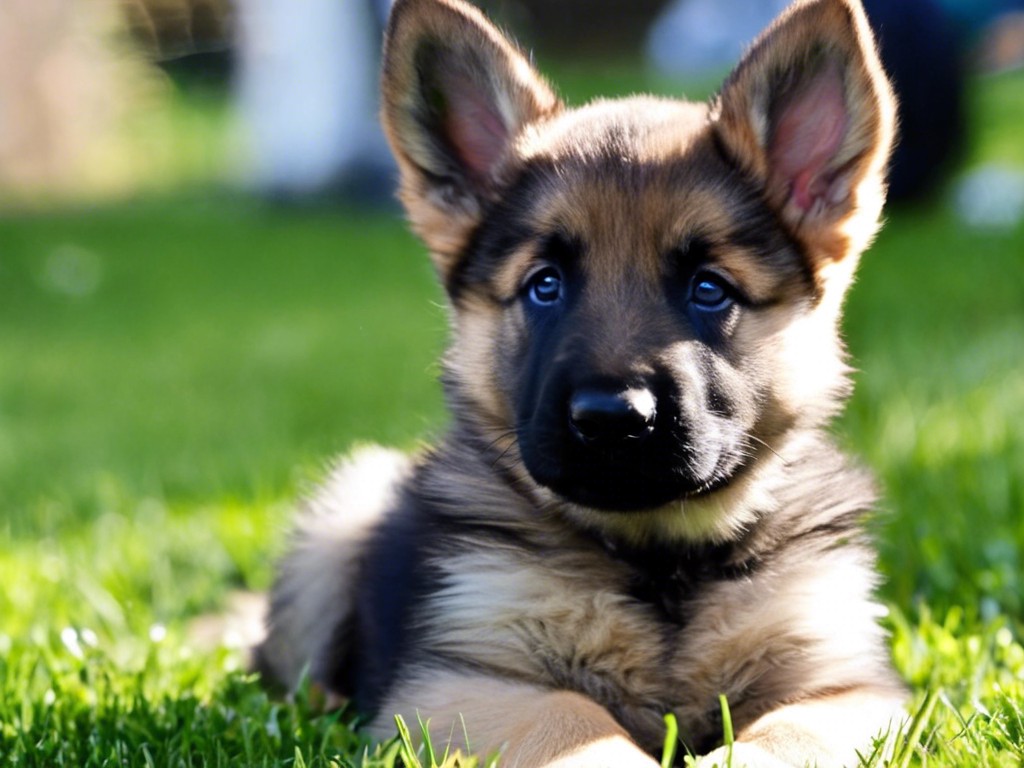
Temperament
Sable German shepherds inherit the breed’s renowned temperament, known for their intelligence, loyalty, and protective nature. They are highly trainable and excel in various roles, including family companions, guard dogs, and working dogs in law enforcement, search and rescue, and military operations.
Like their counterparts, sable German shepherd puppies are eager to please and thrive on mental and physical stimulation. They are energetic and require regular exercise and training to channel their energy and keep them mentally engaged. Early socialization and obedience training are crucial to ensure they grow into well-rounded, well-behaved adults.
Sable German shepherds are often described as aloof with strangers but affectionate and devoted to their families. They form strong bonds with their owners and can be excellent watchdogs, alert to potential threats and protective of their loved ones.
Pros of Owning a Sable German Shepherd Puppy
- Striking Appearance: The unique sable coloration of these dogs is undoubtedly a head-turner, adding a touch of elegance and distinction to their already impressive presence.
- Versatility: German shepherds are renowned for their versatility, and sable German shepherds are no exception. They excel in various roles, from family companions to working dogs, making them suitable for a wide range of households and lifestyles.
- Loyalty and Devotion: Like their breed counterparts, sable German shepherds are known for their unwavering loyalty and devotion to their families. They form strong bonds with their owners and make excellent companions.
- Intelligence and Trainability: Sable German shepherds are highly intelligent and eager to learn, making them responsive to training and capable of mastering a variety of tasks and commands.
Cons of Owning a Sable German Shepherd Puppy
- Shedding: German shepherds are known for their moderate to heavy shedding, and sable German shepherds are no exception. Regular grooming and vacuuming are necessary to manage the shedding.
- Energy Level: Sable German shepherds are energetic dogs that require plenty of exercise and mental stimulation. They may not be the best choice for sedentary or apartment living unless their exercise needs are met.
- Potential for Dominance: Without proper training and socialization, sable German shepherds may exhibit dominant behavior, which can lead to challenges in managing them.
- Potential Health Issues: Like all breeds, sable German shepherds are prone to certain health conditions, such as hip and elbow dysplasia, bloat, and allergies. Responsible breeding and regular veterinary check-ups are essential to ensure their well-being.
Caring for a Sable German Shepherd Puppy
Bringing home a sable German shepherd puppy is an exciting and rewarding experience, but it also comes with responsibilities. Here are some essential aspects to consider:
- Exercise and Mental Stimulation: Sable German shepherds require plenty of physical and mental exercise to remain healthy and well-behaved. Daily walks, playtime, and activities that challenge their minds, such as obedience training or puzzle toys, are recommended.
- Grooming: Regular brushing and bathing are necessary to maintain the sable German shepherd’s coat and minimize shedding. Their nails should be trimmed regularly, and their ears should be checked and cleaned to prevent infections.
- Training and Socialization: Early socialization and obedience training are crucial for sable German shepherd puppies. Exposing them to various sights, sounds, and experiences in a positive manner helps them grow into well-adjusted and well-mannered adults.
- Diet and Nutrition: Providing a high-quality, balanced diet tailored to their age, size, and activity level is essential for their overall health and development. Consult with a veterinarian for guidance on the best diet for your sable German shepherd puppy.
- Veterinary Care: Regular check-ups, vaccinations, and preventive care are essential to ensure the health and well-being of your sable German shepherd puppy. Responsible breeders will provide health clearances for the parents, minimizing the risk of hereditary conditions.
Black Sable German Shepherd Puppies
Among the sable color variations, black sable German shepherd puppies are perhaps the most striking. Their coats appear almost solid black at birth, but as they mature, the individual hairs develop rich, charcoal-colored bands intermixed with deep browns and grays. The result is a striking, wolf-like appearance that exudes elegance and power. Black sable German shepherds often have darker faces, ears, and markings, creating a dramatic contrast against their sleek coats. This color variation is highly prized for its depth and intensity, making black sable German shepherd puppies a favorite among enthusiasts.
Silver Sable German Shepherd Puppies
On the lighter end of the spectrum, silver sable German shepherd puppies are a true delight to behold. Their coats are a beautiful blend of light grays, silvers, and creams, creating a soft and ethereal appearance. As the puppies grow, their individual hairs develop subtle bands of lighter and darker shades, resulting in a shimmering effect that catches the light beautifully. Silver sable German shepherds often have lighter faces and markings, lending them a gentle and elegant demeanor. While less dramatic than their darker counterparts, these puppies are no less stunning, and their unique coloration has captured the hearts of many.
Light Sable German Shepherd Puppies
Light sable German shepherd puppies are a perfect balance between the intensity of the black sables and the softness of the silver sables. Their coats are a warm blend of light browns, tans, and golden hues, with subtle banding that creates a rich and inviting appearance. As they mature, the individual hairs develop bands of lighter and darker shades, creating a depth and complexity to their coloration. Light sable German shepherds often have lighter faces and markings, lending them a friendly and approachable demeanor. These puppies are a popular choice for those seeking a balance of elegance and warmth in their furry companions.
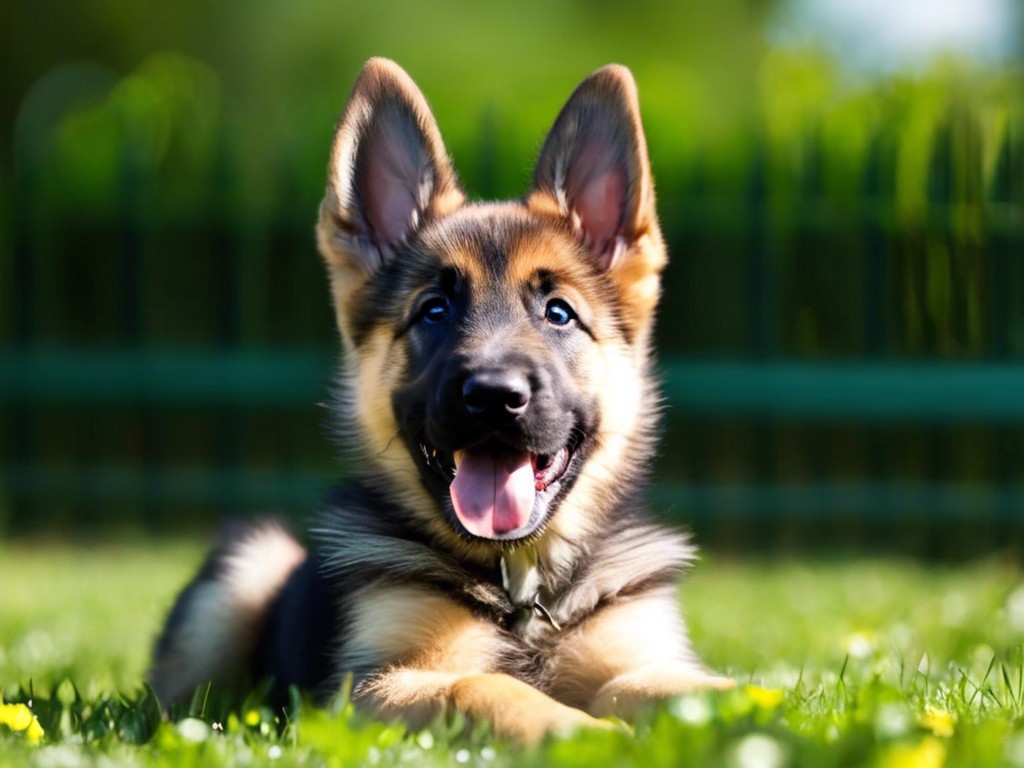
Dark Sable German Shepherd Puppies
For those who prefer a more intense and dramatic look, dark sable German shepherd puppies are a captivating choice. Their coats are a rich tapestry of deep browns, charcoal grays, and inky blacks, creating a bold and striking appearance. As they mature, the individual hairs develop bands of varying shades, resulting in a depth of color that seems to shift and change with the light. Dark sable German shepherds often have darker faces, ears, and markings, adding to their imposing and Wolf-like presence. These puppies exude an air of confidence and strength, making them a popular choice for those seeking a companion with a commanding and powerful aesthetic.
Long-Haired Sable German Shepherd Puppies
While German shepherds are typically known for their medium-length, double coats, some litters produce long-haired sable puppies that are truly a sight to behold. These pups inherit the same beautiful sable coloration as their shorter-haired counterparts, but their coats are distinctively longer and more profuse, creating a lush and fluffy appearance. Long-haired sable German shepherd puppies often have an additional “mane” of longer fur around their necks and shoulders, adding to their regal and majestic look. While their longer coats require more frequent grooming, these puppies are highly sought after for their unique and stunning appearance.

Golden Sable German Shepherd Puppies
On the warmer end of the sable color spectrum, golden sable German shepherd puppies are a true delight. Their coats are a rich blend of golden browns, warm tans, and honey hues, creating a radiant and inviting appearance. As they grow, the individual hairs develop bands of lighter and darker shades, adding depth and complexity to their coloration. Golden sable German shepherds often have lighter faces and markings, lending them a friendly and approachable demeanor. These puppies are a perfect choice for those seeking a companion with a warm and sunny disposition, while still retaining the breed’s signature sable patterning.
Conclusion
Sable German shepherd puppies are truly captivating companions, combining striking appearances with the breed’s renowned intelligence, loyalty, and versatility. While owning a sable German shepherd requires commitment and responsibility, the rewards of having such a devoted and capable canine companion are immeasurable. If you’re prepared to provide the necessary exercise, training, and care, a sable German shepherd puppy may be the perfect addition to your family.
[maxbutton id=”1″]
German Shepherd Lab Mix Puppies
A German shepherd lab mix combines two of America’s most popular dogs. Often called a Sheprador or Labrashepherd, this crossbreed blends the intelligence and trainability of a German shepherd with the friendly, playful nature of a Labrador retriever. Shepherd lab mix puppies have become quite trendy in recent years. However, it’s important to understand the history, temperament, appearance, exercise needs, health concerns, and finding a reputable breeder for one of these energetic hybrids before bringing one home.
Appearance
Shepherd lab mixes can vary significantly in appearance since there are no breed standards for crossbreeds. These puppies tend to be medium to large dogs when full grown, weighing from 50 to 80 pounds. Their height ranges from 21 to 25 inches tall at the shoulder.
Coat colors include black, brown, yellow, cream, tan, white, and bi-color variations of those shades. The fur is generally short to medium length, dense, and sheds moderately year-round. Ears are floppy like a Lab’s or pointy like a shepherd’s. The muzzle shape also varies between the two parent breeds. Tails are often long. Overall, shepherd labs have sturdy, athletic builds perfect for an active family.
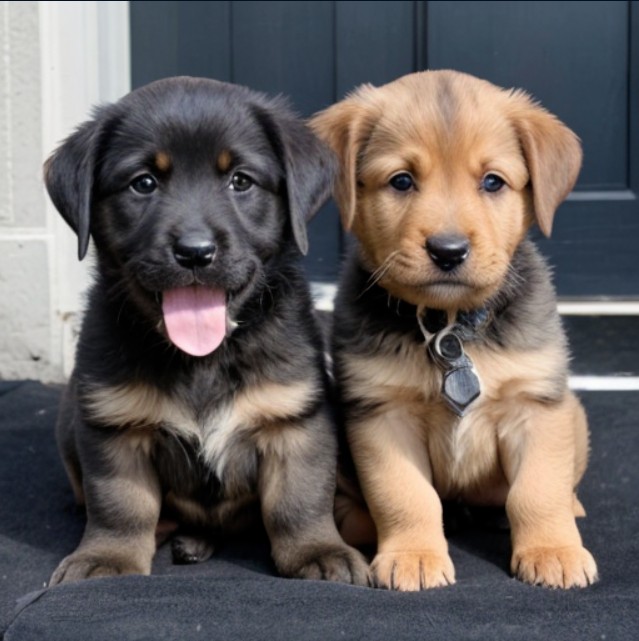
Temperament
Intelligent and eager to please, shepherd lab puppies are relatively easy to train using positive reinforcement techniques. Early socialization helps ensure they grow into well-rounded, friendly adults. When properly exercised, they are gentle playmates for children.
Shepherd lab mixes bond deeply with their people. They can suffer from separation anxiety when left alone for long periods. Boredom and lack of exercise may also lead to destructive behaviors like chewing, digging and barking. A securely fenced yard is recommended.
These hybrids have an energetic, fun-loving nature. They require at least 60 minutes of vigorous activity daily. Food puzzle toys and interactive play can provide needed mental stimulation. Obedience training and socialization should start early and continue through adulthood. Overall, shepherd lab mixes make wonderful jogging or hiking companions.
Grooming and Care
A shepherd lab mix has moderate grooming needs. Give them a thorough brushing once or twice a week to control shedding and keep their coat healthy. Bathe as needed, but no more than once a month to avoid drying out the skin and coat.
Trim their nails every few weeks or as needed. Check and wipe their ears regularly. Brush their teeth frequently with vet-approved dog toothpaste. Providing sturdy chew toys helps maintain strong teeth.
Shepherd lab puppies should be fed a high-quality commercial diet formulated for large, energetic breeds. Feed them three or four portions per day as puppies and reduce to two meals per day by six months old. Always provide easy access to fresh drinking water.
Vet care includes vaccinations, preventatives for fleas/ticks/heartworm, spaying or neutering, and annual checkups. Lifespan is typically 10 to 14 years. Monitor weight as Labrador genes make them prone to obesity.
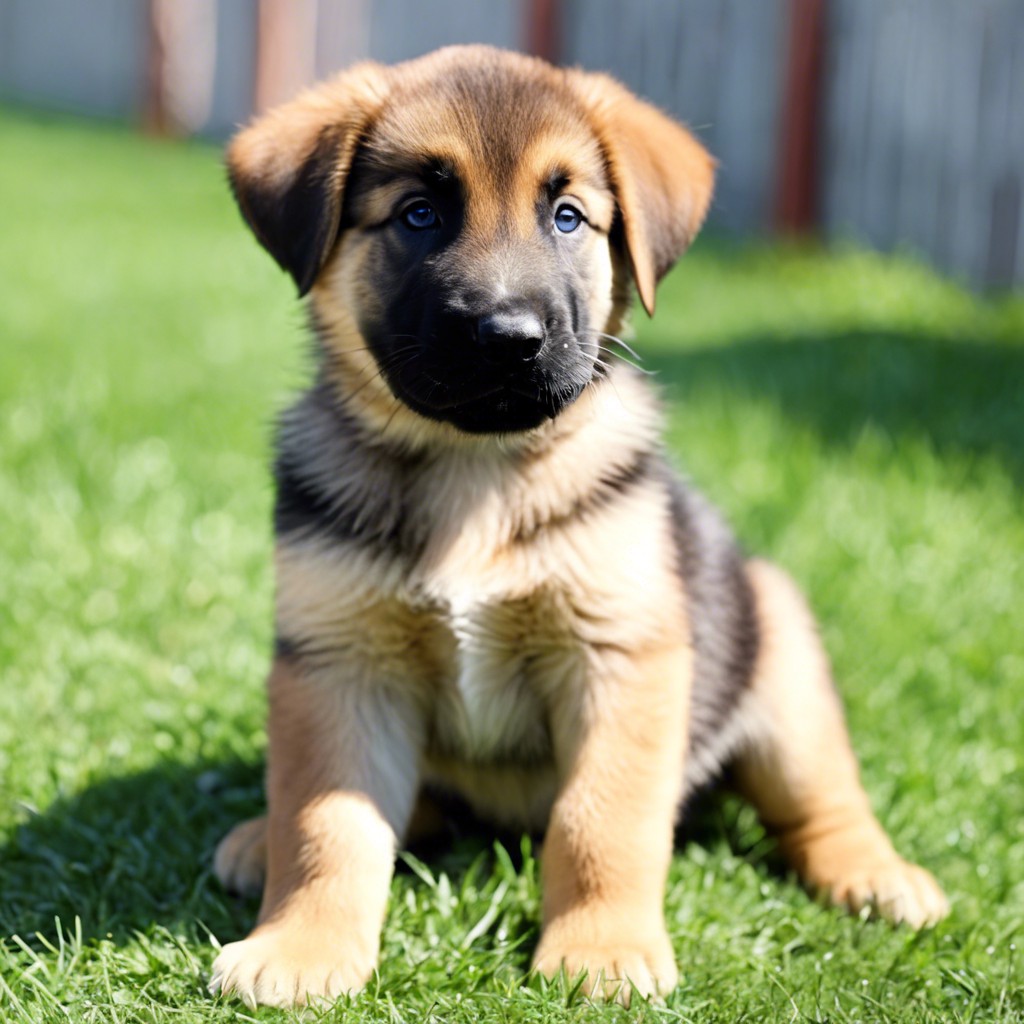
Tan German Shepherd Mix Lab Puppies
One of the most common coat colors for German shepherd Labrador retriever mix puppies is tan. This tan or fawn coloring comes from the German shepherd side, since Labradors do not carry the gene for tan points. Tan shepherd Labs tend to have the classic black muzzle, face, ears and paws with a light tan or fawn body and legs. Their undercoat is often cream or white.
Tan puppies may also have small amounts of black banded hairs mixed throughout their tan coat at birth. This tan point coloration resembles that of a Rottweiler or Doberman. As adults, the tan shepherd Lab’s coat may darken slightly to a more reddish-brown hue. But they maintain the distinctive facial markings and two-tone appearance. T
an shepherd Lab puppies have an adorable look with their puppy fuzz and tan and black contrast. This color is very attractive to many seeking a mixed breed with some striking physical traits from the German shepherd parent.
Whether tan, black, yellow or multi-colored, prospective owners should focus primarily on health and temperament rather than coat color when selecting a German shepherd Lab mix puppy.
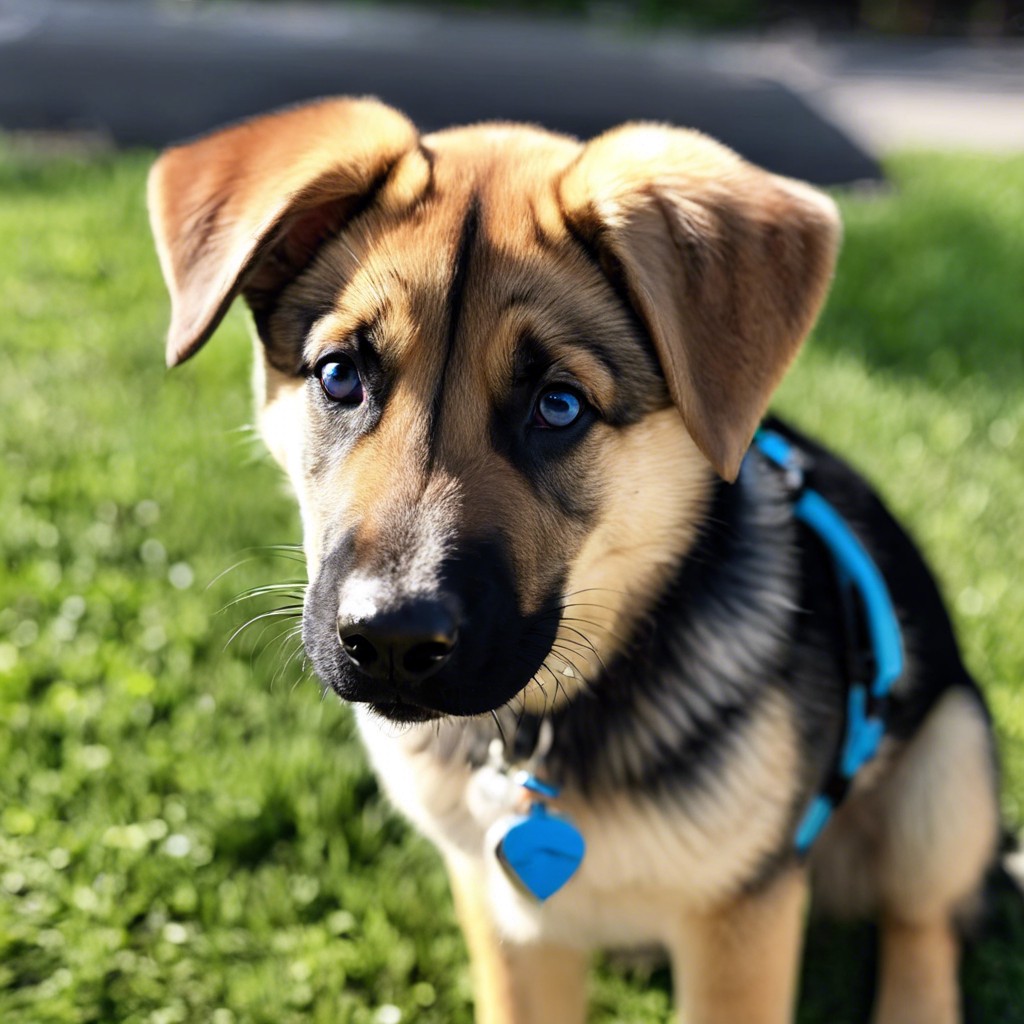
German Shepherd Chocolate Lab Mix Puppies
German shepherd chocolate Labrador retriever mix puppies combine the intelligence of the shepherd with the sweet, sociable nature of the chocolate Lab. Chocolate Labradors carry a recessive gene that causes their brown coats, nose and eyes. When crossed with a German shepherd, the resulting puppies have a 50/50 chance of inheriting this chocolate coloration.
German shepherd chocolate Lab mix puppies are an adorable milk chocolate hue with hints of caramel on their paws, muzzle and eyebrows. Their fur is dense and sheds moderately. Ears are often floppy like those of a Lab. As adults, their coats can range from light brown to darker chocolate depending on which genes are expressed.
Temperament-wise, these puppies are energetic, eager to please and bond strongly with their family. Early training and socialization is key to prevent any wariness around strangers inherited from the shepherd side. Provided they get plenty of exercise and mental stimulation, a German shepherd chocolate Lab mix makes a wonderful, fun-loving family companion.
White German Shepherd Mix Lab Puppies
White German shepherd Lab mix puppies are quite rare and striking in appearance. They exhibit the snowy white coat coloring of a white German shepherd combined with the body shape and floppy ears of a Labrador retriever.
White shepherd Lab puppies may have small tan or cream markings on their paws or chest, but are predominately bright white in color. This lack of pigment stems from a recessive gene that inhibits melanin production. As adults, their coats may develop a very light cream or biscuit tint.
White shepherd Lab puppies are at increased risk for deafness, sunburn, and other health issues related to their lack of pigment. Reputable breeders will screen for these conditions. White coats require diligent sun protection.
Grooming needs are moderate thanks to the short-haired Lab influence. In temperament, a white shepherd Lab is playful, energetic and devoted like any shepherd or Lab. Their rare white coats may attract attention but remember to choose your puppy based on health, personality and connection rather than color alone.
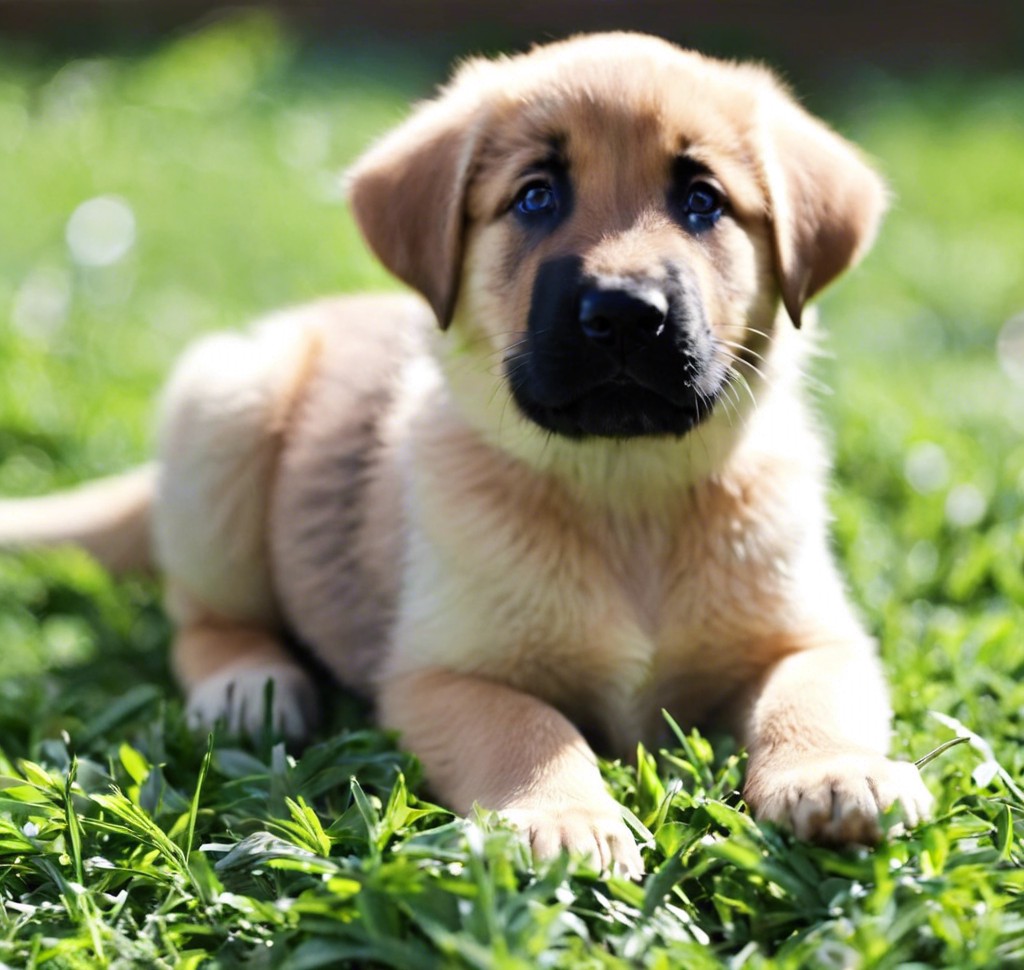
Black German Shepherd Mix Lab Puppies
Black German shepherd Labrador retriever mix puppies are quite striking in appearance. They exhibit the iconic solid black coat of the German shepherd combined with the stockier body structure and floppy ears characteristic of the Lab parent.
Black shepherd Lab puppies may have small white markings on their paws or chest, but are predominantly jet black in color. This rich pigment comes from a dominant gene passed down from their German shepherd side. As adults, their coats may develop some brown shading around the muzzle and underside, but maintain an overall deep black hue.
Black shepherd Lab puppies have an adorably fuzzy, dark puppy coat that transitions to become sleeker but sheds heavily during adolescence. Their grooming needs are moderate. In temperament, a black shepherd Lab is playful, energetic and devoted like any shepherd or Lab. Their dark coats may attract attention but remember to choose your puppy based on health, personality and your connection rather than color alone.
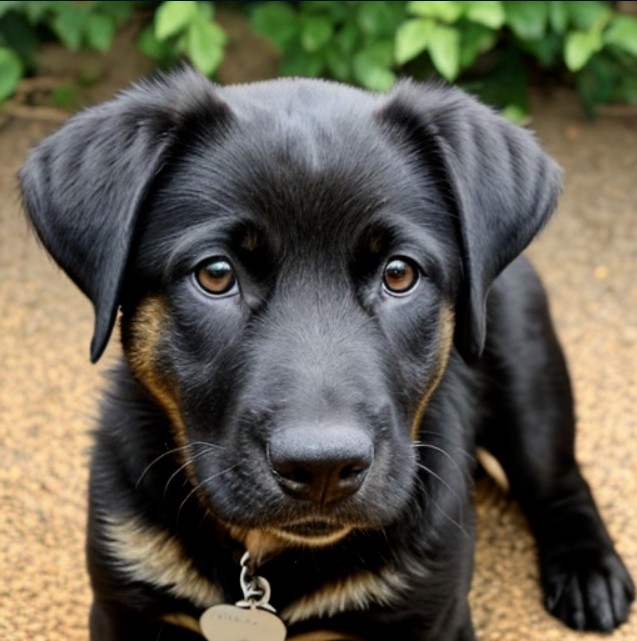
German Shepherd Lab Mix Puppies For Sale
Shepherd lab puppies are often bred accidentally by negligent owners or in backyard breeding operations focused on profit over health and temperament. It’s essential to find a responsible breeder who tests their breeding dogs for genetic diseases common in both parent breeds like hip dysplasia.
A good breeder will ask you questions, allow you to meet at least the puppy’s mother in person, prove vaccinations and deworming, have a health guarantee, and take back any puppy at any time if you can’t keep it. Expect to pay $500 to over $1000 for a shepherd Labrador mix from a reputable source.
You may also be able to adopt a shepherd lab mix puppy or dog from a rescue group or shelter. The bonus is they often cover initial vet costs. Do your research to ensure it’s a nonprofit, no-kill shelter with a good reputation. Beware of “free puppies” listings online, as they often come from puppy mills or backyard breeders.
With early socialization, training, proper exercise and care, a German shepherd Labrador retriever mix can make a wonderful, loving family dog. Take time to find the right shepherd lab pup for your home.
White German Shepherd Puppies
White German shepherd puppies are a beautiful and intelligent breed of dog that make wonderful companions. As puppies, they are energetic, playful, and eager to learn. Their snowy white coats and striking features stand out among other breeds. While similar to the classic German shepherd dog, the white coat is a recognized variation. White shepherds have gained popularity over the last few decades, but they can still be challenging to find amongst breeders.
Appearance
White German shepherds look just like their more common colored counterparts except for their pure white coats. They have the same strong and muscular bodies with a domed forehead, erect ears, dark nose and eyes. Males typically weigh from 65 to 90 pounds and stand 24 to 26 inches tall while females weigh 50 to 70 pounds and stand 22 to 24 inches tall.
The white coat gene is recessive, meaning both parents must carry it to produce white puppies. Occasionally white shepherds have small patches of cream, biscuit or light tan, especially on the ears. Their coats are straight, dense, and of medium length. While some white shepherds have longer coats, this is less desirable for the breed standard. Eyes should be almond shaped and dark. Overall, the white coat should not be faulted as long as conformation and temperament meet breed standards.
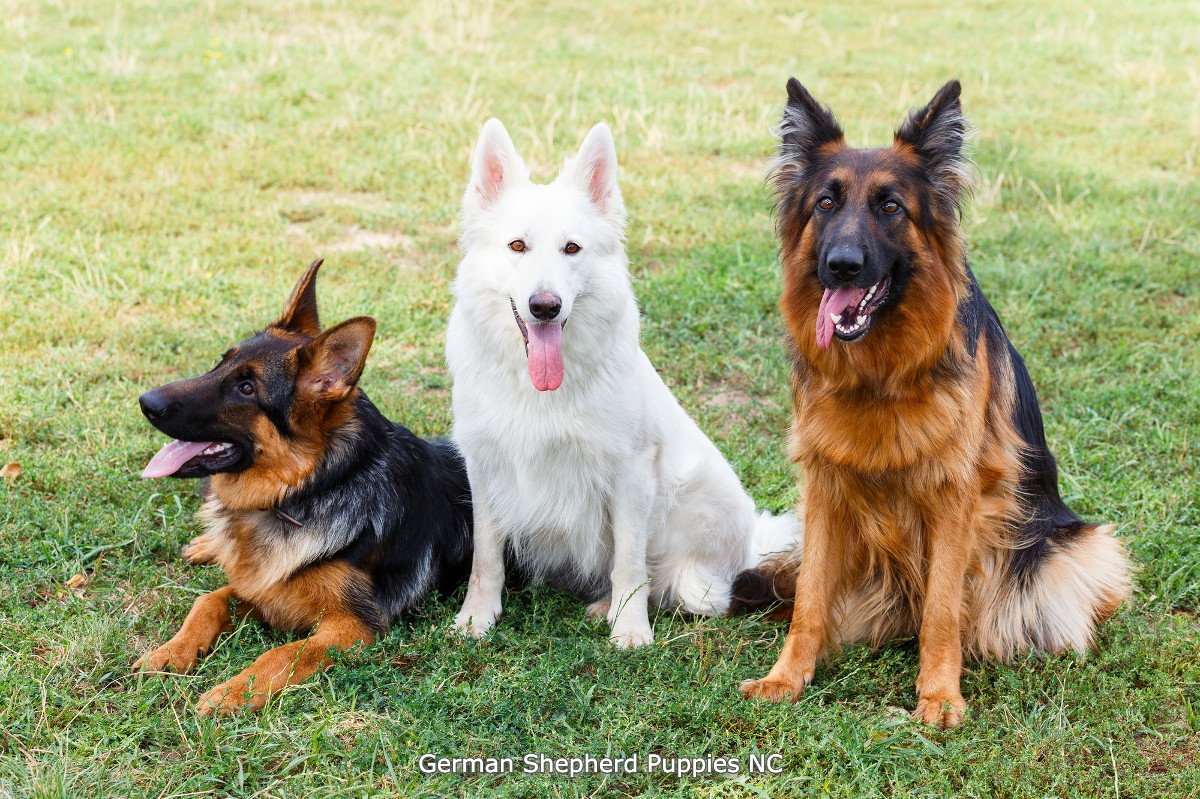
Temperament
Like all German shepherds, the white variety is intelligent, eager to learn, energetic and loyal. They bond very closely with their families. White shepherds are alert watchdogs who may be wary of strangers. Early socialization and training is important to develop a calm and friendly temperament.
White shepherds need significant exercise and mental stimulation. They thrive when given a job to do. This is an energetic breed that enjoys activities like obedience, agility and hiking. Well-exercised shepherds are less likely to develop problem behaviors. They are not suited to being left alone for long periods.
White shepherds can adapt well to living in apartments if properly exercised. A house with a yard is ideal. They tend to get along well with children and other pets when raised with them, but adult supervision is still required. Their high intelligence means they need variety and challenge to prevent boredom or frustration.
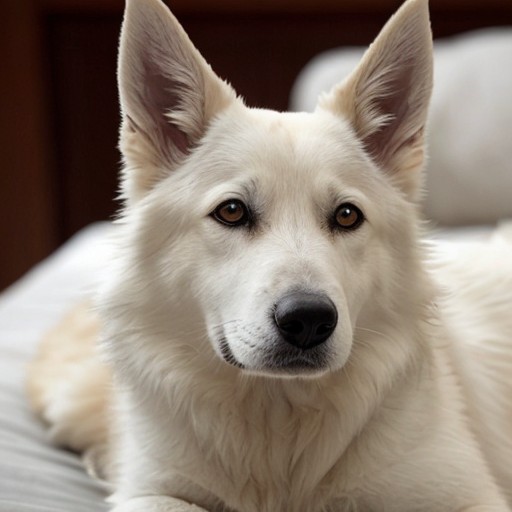
Grooming and Care
The white coat requires relatively minimal grooming to keep clean and remove dead hair. Occasional bathing and weekly brushing is typically sufficient. Their nails should be trimmed regularly. Check and clean their eyes and ears periodically as well. They are average shedders.
White shepherds should receive high quality food formulated for large energetic breeds. Feed puppies 4 meals per day then switch to 2 meals per day after 6 months of age. Provide plenty of fresh water.
These dogs need regular vet checkups, vaccinations and preventative medication for fleas, ticks and heartworms. Spaying or neutering around 6 months old is recommended. Due to their energetic nature, injuries are not uncommon, especially during the first year. Common health issues include hip and elbow dysplasia, allergies, and digestive problems. With proper care, white shepherds live 10 to 14 years.
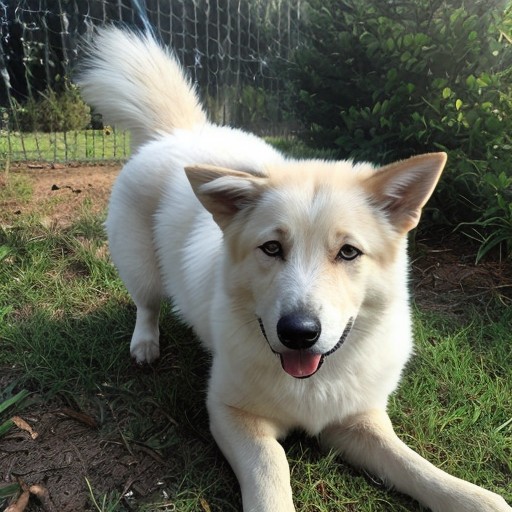
Finding White Shepherd Puppies
Be sure to contact us to see if we have any white puppies available right now.
White shepherd puppies can be challenging to find since few breeders focus on producing them. White coats occurred naturally in German shepherd lines early on. However, in the 1960s, white shepherds began to be excluded from breed standards and were discouraged.
Renewed interest developed a following of enthusiasts who appreciated the white coat variation. White shepherds are now UKC registered and can participate in many competitive and sporting events. The White German Shepherd Dog Club of America is dedicated to preservation and protection of the white shepherd.
Reputable breeders aim to breed for health, temperament and conformation to breed standards. Be very wary of those focused only on coat color.
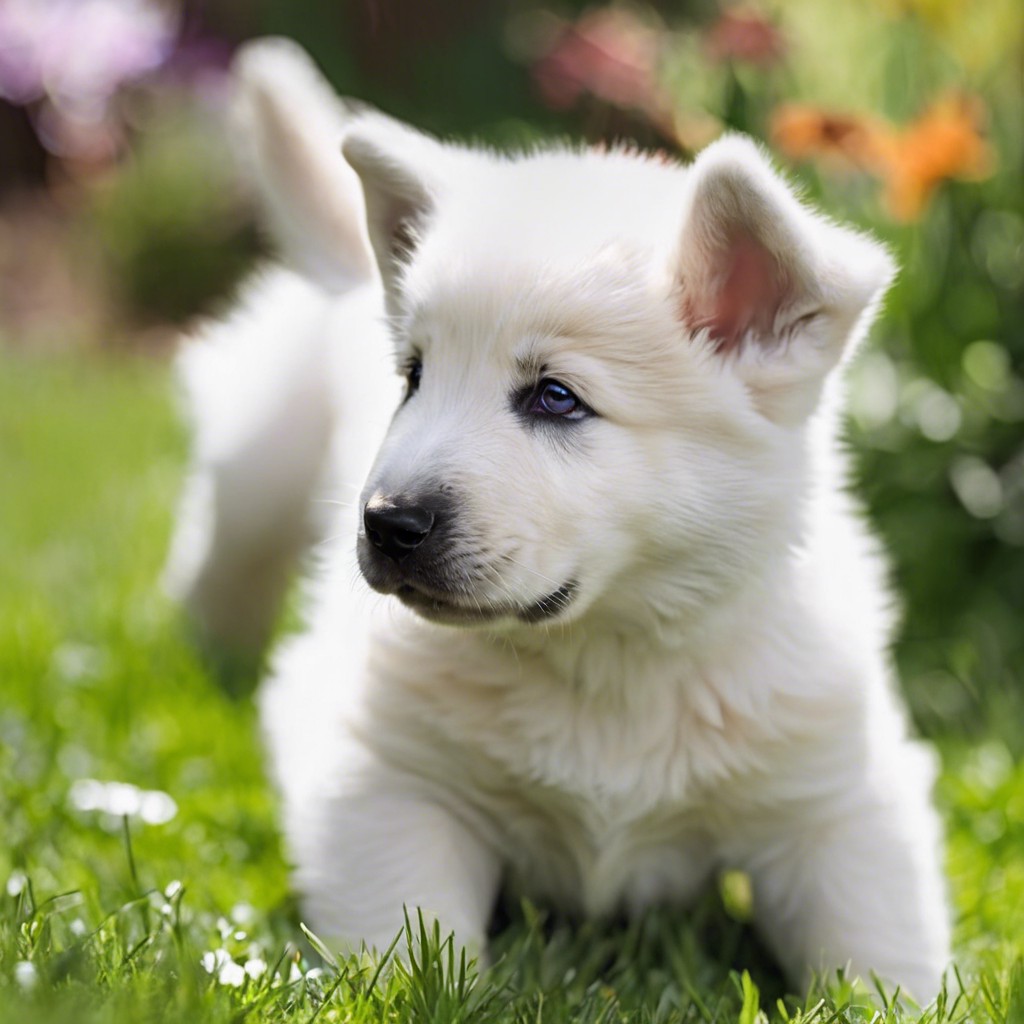
White German Shepherd Puppies Price
Expect to pay as little as $1000 to $1500 or more for a white shepherd puppy, or as high as $2,500 depending on the quality of the breeder and the white German Shepherd puppies he has for sale. Many breeders sell out FAST, so be sure to act quickly if you find a breeder that has some available.
Most will require you complete an application, have a phone interview, check vet references, and sign a contract. A health guarantee, return policy, and evidence of health testing are musts. Visit breeders to meet puppies and parents if possible.
White German Shepherd Puppies for Adoption
Consider adoption if hoping to add one of these marvelous dogs to your life and all of the breeders in your state are sold out and their waiting list is years long. There are white shepherd rescues that take in dogs needing new homes, but keep in mind that this rare breed is ever given up for adoption. Ultimately though, patience and research is key to find the right white shepherd puppy.
Short Haired German Shepherd Puppies: A Guide To These Beautiful Dogs
The short haired German shepherd is a variation of the breed with a shorter, sleeker coat than the standard German shepherd dog. While most German shepherds have longer fur, the short haired variety has shorter fur over a dense undercoat. Short haired German shepherd puppies have a distinctive appearance but share the intelligence and versatility of any German shepherd. Here are 10 key facts about these interesting pups:
Their Origins
Short haired German shepherds originated from breeding the traditional German shepherd with dogs that carry the recessive gene for short fur. By selectively breeding dogs with this recessive trait, breeders were able to produce German shepherd puppies with the shorter coat. They are recognized as purebred by kennel clubs.
Their Shorter Coat
As the name implies, short haired German shepherds have shorter fur covering their dense undercoat. Their hair is approximately 1-2 inches long over most of the body and may be slightly longer around the neck. The coat lies flatter and closer to the body than the coat of a standard German shepherd.
They Shed Less Than Standard German Shepherds
Due to the shorter length of fur, short haired German shepherds typically don’t shed as heavily as their longer haired counterparts. Their shorter coats require less frequent brushing to keep loose hair under control. Vacuuming is needed less often as well.
They are Well-Suited for Warm Climates
The shorter fur of the short haired German shepherd means they are more heat tolerant and adaptable to warm climates than German shepherds with longer coats. Their coats still provide protection from the elements but don’t cause them to overheat as quickly in high temperatures.
They Have the Same German Shepherd Temperament
Aside from the coat differences, short haired German shepherd puppies have the same temperament as any other well-bred German shepherd. They are self-assured, loyal, highly intelligent and bond closely with their family. With proper training and socialization, they make excellent working, sport and companion dogs.
They Need Just as Much Exercise
Don’t think that just because of the shorter coat, short haired German shepherds require less exercise. They still need at least 30-60 minutes of vigorous activity every day to prevent boredom and destructive behavior. Fetch, jogging, agility training and hiking are great outlets for their energy.
They Excel at Dog Sports and Work
The athleticism, trainability and protective instincts of the German shepherd make them a top choice for many types of work. Short haired German shepherds possess these same qualities that allow them to excel at dog sports, as police dogs, service dogs and search and rescue dogs among other roles.
Their Grooming Needs Are Lower
Short haired German shepherds only need occasional brushing to keep their coats looking sharp. During shedding season or times of heavier shedding, more frequent brushing may be needed. Their shorter coats also make bathing and drying them faster and easier. Overall, grooming needs are less than for the standard German shepherd.
They Prone to the Same Health Issues
Like all German shepherds, short haired German shepherds are prone to health conditions such as hip and elbow dysplasia, degenerative myelopathy, and digestive issues. Reputable breeders will test breeding dogs to reduce chances of these issues. Always ask for proof of health testing on parents.
They Need Early Socialization and Training
Proper socialization and training is crucial for any German shepherd to be a well-adjusted companion. Short haired German shepherd puppies should be socialized to new sights, sounds, people and animals as early as 7-8 weeks old. Obedience training provides mental stimulation and reinforces the bonding between dog and owner.
The Unique Short Haired German Shepherd
With their shorter coats, excellent working ability, trainability and loyalty, short haired German shepherds are a great alternative to the standard long haired variety. Their shorter coats make them well-suited for warm areas. When properly trained and exercised, these intelligent, protective pups make wonderful family dogs and working companions.
What is a BLUE GERMAN SHEPHERD?
The blue German shepherd is a rare color variation of the standard German shepherd dog breed. While most German shepherds have the classic black and tan coat, the blue German shepherd has a gorgeous gray or silver-blue coat. Blue German shepherd puppies are just as adorable and intelligent as their more common black and tan counterparts. Here are the top 10 things you should know about these unique pups:
Their Origins
The blue coat color in German shepherds originated from a recessive gene. Breeders started intentionally breeding dogs with the recessive blue gene in the 1970s and 80s to produce more blue-coated German shepherd puppies. While they are not as common as the standard black and tan German shepherd, blue German shepherds are recognized as purebreds by major kennel clubs.
Their Beautiful and Unique Coat
The blue or gray coat is what makes the blue German shepherd stand out. Their fur can range from a light silver-blue to a deeper slate gray. While the coat is mostly a solid blue or gray, they may have some black hairs mixed in or a small amount of tan markings. Their striking blue coat makes them eye-catching dogs.
They Have the Same German Shepherd Temperament
Aside from their coat color, blue German shepherd puppies have the same temperament and personality traits as any other well-bred German shepherd. They are intelligent, loyal, protective and eager to please their owners. Proper socialization and training are still essential for raising a calm, well-mannered blue German shepherd.
They Need Daily Exercise
Like all German shepherds, blue German shepherd puppies grow into active adult dogs with lots of energy. They need at least 30-60 minutes of exercise every day. Long walks, play time in the yard, or jogging with their owner are great ways to keep them fit and stimulated. German shepherds also enjoy activities like agility, obedience training or participating in dog sports.
They are Protective of their Owners
With good socialization and training, the blue German shepherd’s natural protectiveness and loyalty make them excellent guard dogs and companions. They form strong bonds with their owners. Due to their suspicious nature toward strangers and their large size, early obedience training and exposure to a variety of people, animals and situations is essential.
They are Intelligent and Eager to Learn
German shepherds are renowned for being highly intelligent, a trait the blue color variation shares. Blue German shepherd puppies are fast learners and are motivated to train when positive reinforcement is used. Advanced obedience, trick training or dog sports provide great mental stimulation for these bright pups.
They Need Proper Health Testing
Reputable blue German shepherd breeders will do health testing on breeding dogs to reduce the chances of inherited diseases. Hip and elbow dysplasia, eye problems and degenerative myelopathy sometimes occur in German shepherds. Testing allows breeders to selectively breed the healthiest dogs. Ask for proof of health testing before getting a blue German shepherd puppy.
They Have Sensitive Stomachs
German shepherds are prone to digestive issues like bloat, food sensitivities and diarrhea. Blue German shepherds often have particularly sensitive stomachs. Feed them a high-quality diet formulated for large breeds and avoid overfeeding. Limit exercise right before and after meals as well. Talk to your vet if your pup has frequent gastrointestinal problems.
They Shed Year-Round
The blue German shepherd has a medium-length double coat that sheds moderately to heavily all year. Regular brushing helps keep loose hair under control, especially during heavy shedding seasons. Some blue German shepherds may have slightly wavy fur that is thicker around the neck. Be prepared to vacuum and brush your pup frequently.
They Need Proper Socialization
Early socialization helps any German shepherd puppy grow into a confident, stable adult dog. Introduce your blue German shepherd puppy to new places, people, animals, and experiences starting at 7-8 weeks old. Well-socialized German shepherds are friendly toward strangers and less likely to develop behavioral issues. Sign puppy up for obedience classes for more socialization opportunities.
The Unique Blue German Shepherd
With their regal blue coats, intelligence, and loyal personalities, blue German shepherd puppies make wonderful family companions and working dogs. These rare beauties stand out from the crowd but have all the same desirable traits as the classic black and tan German shepherd. If properly trained and socialized, the blue German shepherd grows into an impressive and dedicated dog that draws admiration wherever it goes.
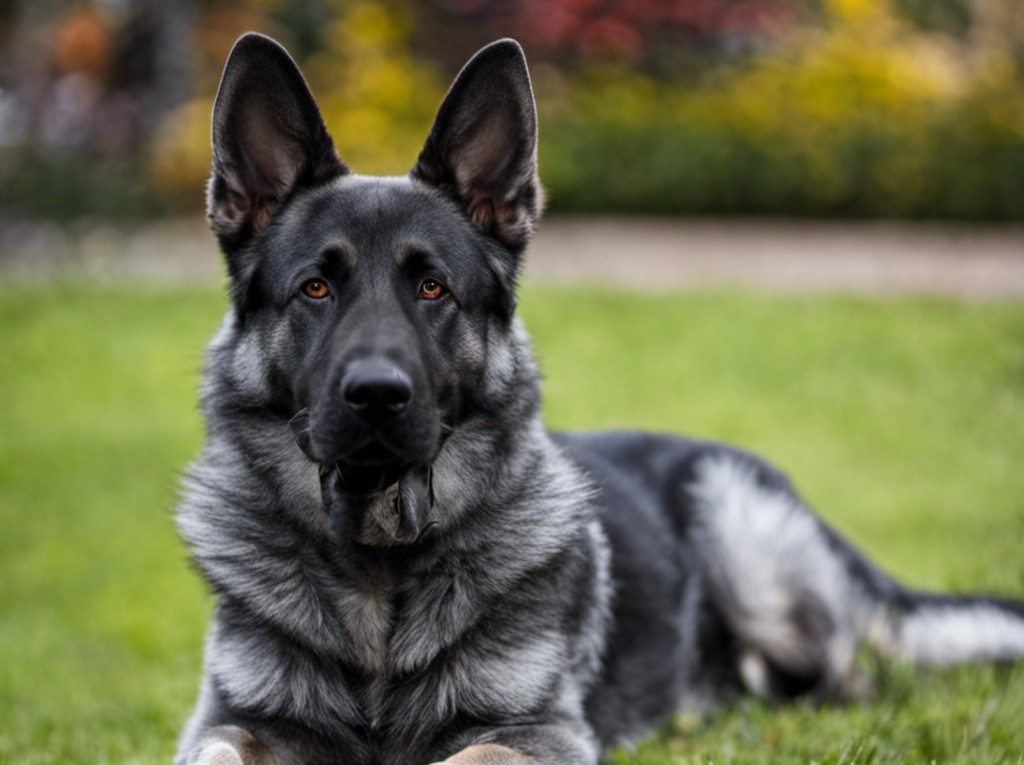
German Shepherd Dachshund Mix: An Unusual Crossbreed
The German Shepherd Dachshund mix, sometimes called a German Shepador or Dachshepherd or Doxie Mix, is a unique and uncommon cross between two very different pure breeds – the German Shepherd and Dachshund. This interesting blend results in a dog with some quirky but endearing characteristics. Let’s take a closer look at what owners can expect with this distinct hybrid dog.
Appearance
With such disparate parent breeds, the German Shepherd Dachshund mix can vary significantly in size and proportions. Most inherit the elongated Dachshund body and short legs along with the German Shepherd’s pointy ears. Their coats are usually thick and medium length, coming in tan, black, gray or a mix of colors. Most will have the long muzzle of a Shepherd. Their average size ranges between 20-55 pounds standing 8-20 inches tall. Overall, their strange blend of features gives them a distinctive look.
Temperament
From the Shepherd side, this cross typically has high intelligence, trainability, and loyalty. The Dachshund lineage contributes fearlessness, curiosity and spunk. When properly socialized, these little dogs are very friendly and devoted to their families. They can be vocal and excitable but not excessive barkers. Their bravery makes them good watch dogs despite their small stature. Overall, their personas lean more towards the Dachshund than the Shepherd.
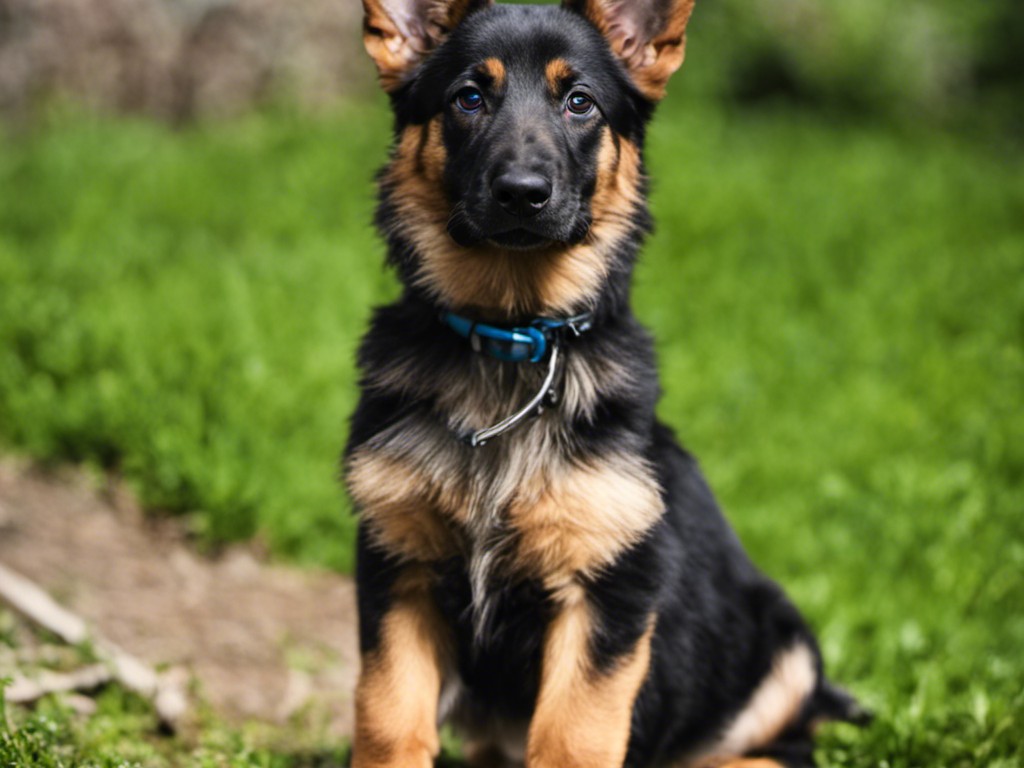
The Pros
There are many positive traits of this unique hybrid dog:
- Affectionate and loving
- Intelligent and trainable
- Minimal shedding with smooth coat
- Courageous with watchdog abilities
- Does well in apartments due to small size
- Playful and energetic
- Gets along well with children
- Long lifespan of 12-16 years
Potential Cons
Some drawbacks to consider include:
- Can suffer from “small dog syndrome”
- Prone to back problems and weight gain
- Stubbornness and difficulty housebreaking
- Tendency to bark and be vocal
- Wariness and aggression towards other dogs
- Difficult to train due to clashing lineage
- Serious health issues with unsound breeding
When purchased from a reputable source, the German Shepherd Dachshund mix makes a fun, lively family companion. Proper training and early socialization is vital to prevent small dog behaviors.
Exercise and Training
Despite their compact size, these hybrids have fairly high energy levels. 30-60 minutes of daily walking or running is ideal to prevent restlessness. Mentally stimulating games and toys are also helpful for their active minds. Early socialization and obedience training is highly recommended to curb stubborn tendencies and manage their excitable nature. Positive reinforcement works very well for training this intelligent hybrid.
Grooming and Care
The German Shepherd Dachshund mix has minimal grooming needs overall. An occasional brushing and bath as needed will keep their coat looking its best. Dental care is very important for these small dogs prone to periodontal disease. Their diets should be carefully monitored, as they can become overweight easily leading to back problems. Annual vet visits for checkups and vaccines will help keep these dogs healthy.
Health Issues
All hybrids can inherit health conditions of both parental breeds. For the German Shepherd Dachshund mix, watch for back problems, allergies, patellar luxation, bloating, eye disease, and skin problems. Buying from a responsible breeder who screens for these issues is critical. When cared for properly, these resilient little dogs enjoy a lifespan of 12-16 years.
Finding a German Shepherd Dachshund Mix Puppy
We strongly recommend avoiding pet stores and online sellers when looking for one of these rare hybrid puppies. Only go through a breeder who does health testing and focuses on breeding healthy, sound dogs over making profits. Expect to join a waitlist and pay a premium price for a well-bred German Shepherd Dachshund mix puppy. Be patient and do your homework to find the right fit.
The German Shepherd Dachshund mix certainly stands out from the crowd with their unique blend of features. They make surprisingly great companions when purchased from a responsible source and properly trained and socialized. While an unlikely pairing, the loyal Shepherd united with the spunky Dachshund creates a loveable, lively mixed breed worth considering.
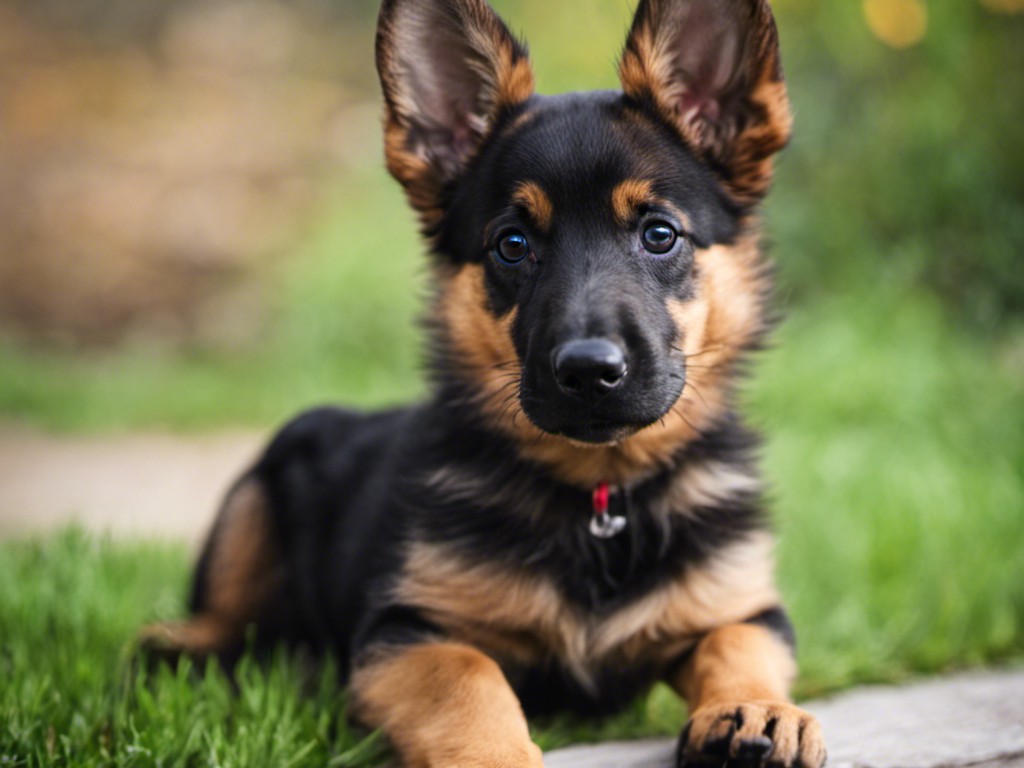
Cane Corso German Shepherd Mix: A Powerful and Protective Hybrid
The Cane Corso German Shepherd mix is a cross between two formidable working breeds – the Italian Cane Corso and the German Shepherd. Both parent breeds are intelligent, driven, and loyal. When combined, the result is an exceptional hybrid dog with sought-after qualities for work or companionship.
Appearance
The Cane Corso German Shepherd mix can differ in looks, but typically has a strong, muscular build reminiscent of both parental breeds. They often have the Cane Corso’s signature large, rectangular head along with the German Shepherd’s erect ears. Their coats are thick, short to medium length and come in colors like black, fawn, gray, brown and tan. Most will have the black mask of the Cane Corso. Their average height ranges from 22-28 inches and weight from 70-120 pounds.
Temperament
This hybrid has protective guarding instincts inherited from both lineage. They bond very closely with their family. The Cane Corso German Shepherd mix is affectionate, loyal, and highly intelligent. They have an inherent desire to please their owner. Without proper socialization, they can be wary of strangers so early exposure to people and animals is essential. When properly trained, they make exceptional companions.
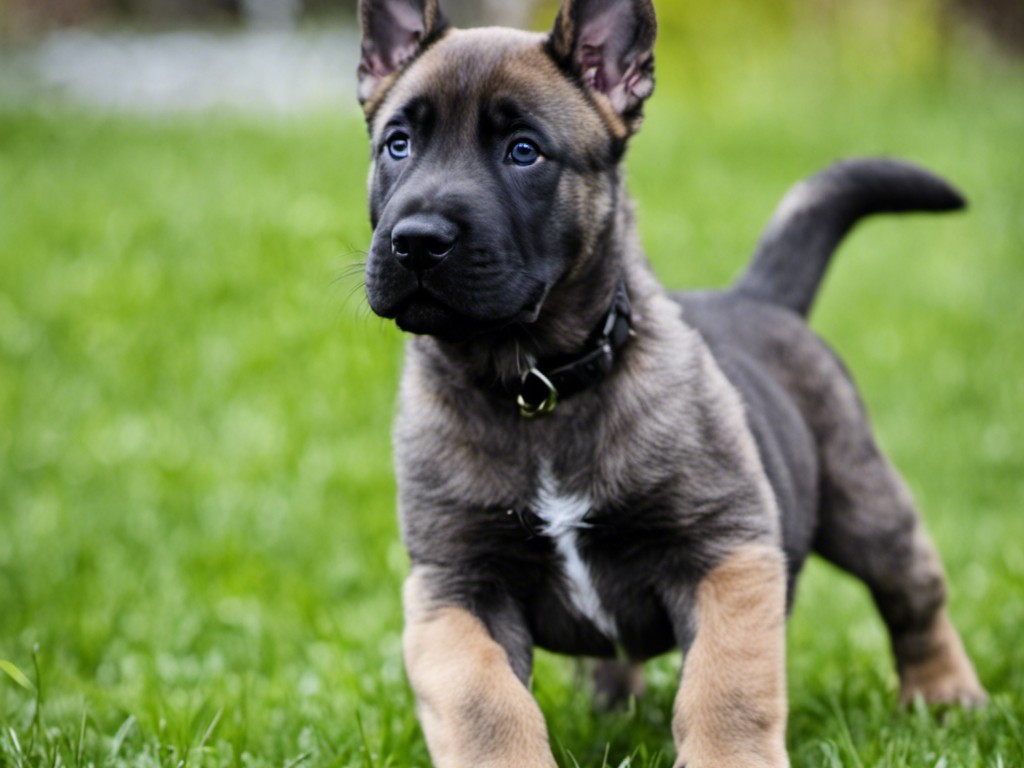
The Pros
There are many advantages to choosing a Cane Corso German Shepherd cross:
- Very loyal and devoted
- Naturally protective of their family
- Highly intelligent and trainable
- Powerful and athletic
- More agile than a purebred Cane Corso
- Short coat requires little grooming
- Excellent stamina and work ethic
- Intimidating appearance deters intruders
Potential Cons
Here are a few things to consider with this hybrid:
- Strong-willed and needs experienced handling
- Can be dog aggressive without socialization
- Large size makes them best for houses with yards
- Heavy shedding year-round
- Suspicious of strangers unless trained otherwise
- Not ideal for first-time dog owners
- Prone to certain health issues of both breeds
- Requires extensive daily exercise
Overall, they make marvelous companions for active owners able to properly train and exercise these bright, powerful dogs.
Exercise and Training
The Cane Corso German Shepherd mix has high energy levels and intensity. They require a minimum of 60-90 minutes of vigorous daily exercise. Secure leashes are a must when walking these muscular dogs. Establishing yourself as a confident pack leader is critical through early obedience training and structure. Positive reinforcement training brings out their eagerness to work. Patience is needed, as they can be prone to stubbornness. Mentally stimulating activities are also important to prevent boredom and destructive behaviors.
Grooming and Care
The short to medium coat of this hybrid needs only occasional brushing to remove loose hair. Bathing should be done every few months. Their floppy ears are prone to infections so will need regular cleaning and inspection. Dental care is important with their large jaws prone to periodontal disease. Their diets should be high quality dry kibble to avoid weight gain.
Health Issues
Potential health issues to be aware of include hip and elbow dysplasia, gastric torsion, allergies, and eye problems. Reputable breeders will screen for these conditions to minimize risk. With proper nutrition, exercise, routine vet care, and early health screening, these devoted hybrids can live 10-13 years.
Finding a Cane Corso German Shepherd Mix Puppy
We recommend extreme caution when seeking Cane Corso German Shepherd mix puppies. Always avoid pet stores and online sellers. Locate a responsible breeder who provides health clearances on parent dogs and places temperament and welfare as top priorities. Be prepared to get on a breeder’s waitlist. Take your time finding the right breeder and puppy.
The Cane Corso German Shepherd mix balances the best traits of two phenomenal breeds. For the right owner willing to properly train and socialize, they make loyal guardians and sweet, affectionate companions. Their popularity is steadily growing thanks to their unique combination of intelligence, power, and protective devotion.
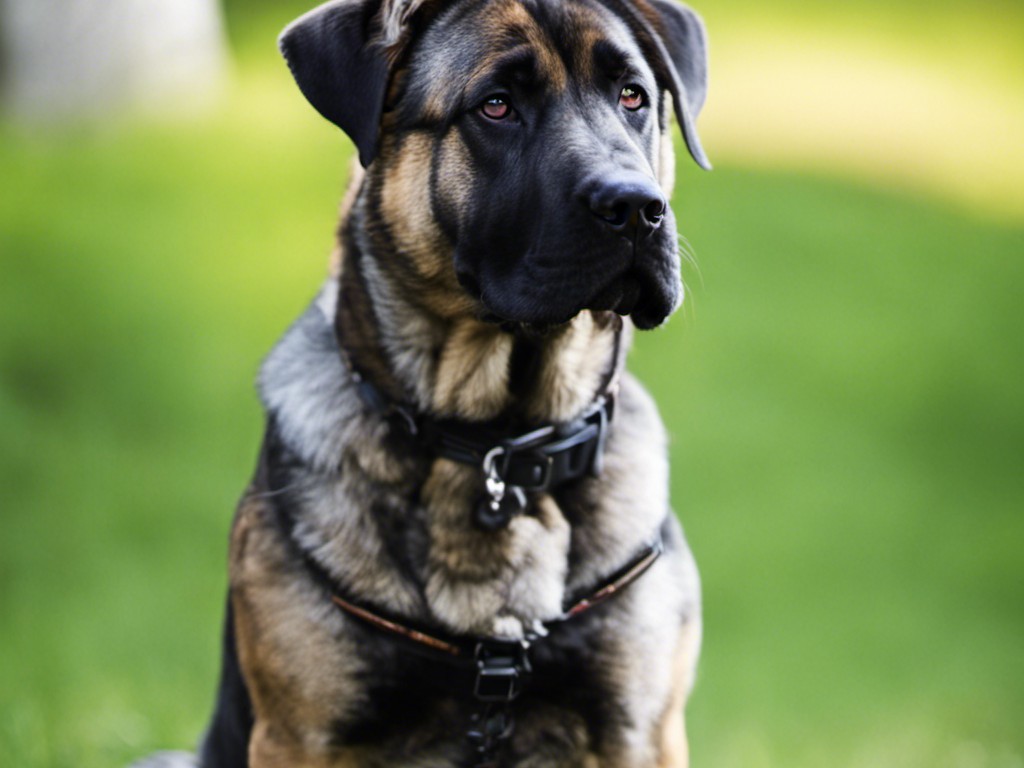
Silver Sable German Shepherds: A Beautiful and Intelligent Breed
The Silver Sable German Shepherd is a relatively rare color variation of the popular German Shepherd breed. Known for their stunning silver and black coats, these dogs possess all the best traits of the German Shepherd personality – loyal, intelligent, and energetic. Let’s explore what makes Silver Sable Shepherds such exceptional companions.
Appearance
The most defining feature of the Silver Sable German Shepherd is of course their unique coloration. Their coats are primarily a rich charcoal or silver hue with black tips on the fur giving a “sable” effect. No two coats are exactly alike with variations in shading. Their regal silver coats combined with the noble Shepherd stance makes them truly beautiful dogs. They typically have black masks and features. Eyes are brown though lighter shades can occur. Overall, the Silver Sable Shepherd closely resembles the classic black and tan German Shepherd in body structure.
Temperament
Since the Silver Sable color is simply a pigment variation, their personality and temperament is identical to any standard German Shepherd. This means they are highly intelligent, loyal, brave and great protectors of their family and home. German Shepherds form extremely close bonds with their owners. They aim to please and are highly responsive to obedience training when done properly. German Shepherds need ongoing socialization to thrive in family living situations. Overall, the Silver Sable Shepherd’s temperament is what makes them elite service and companion dogs.
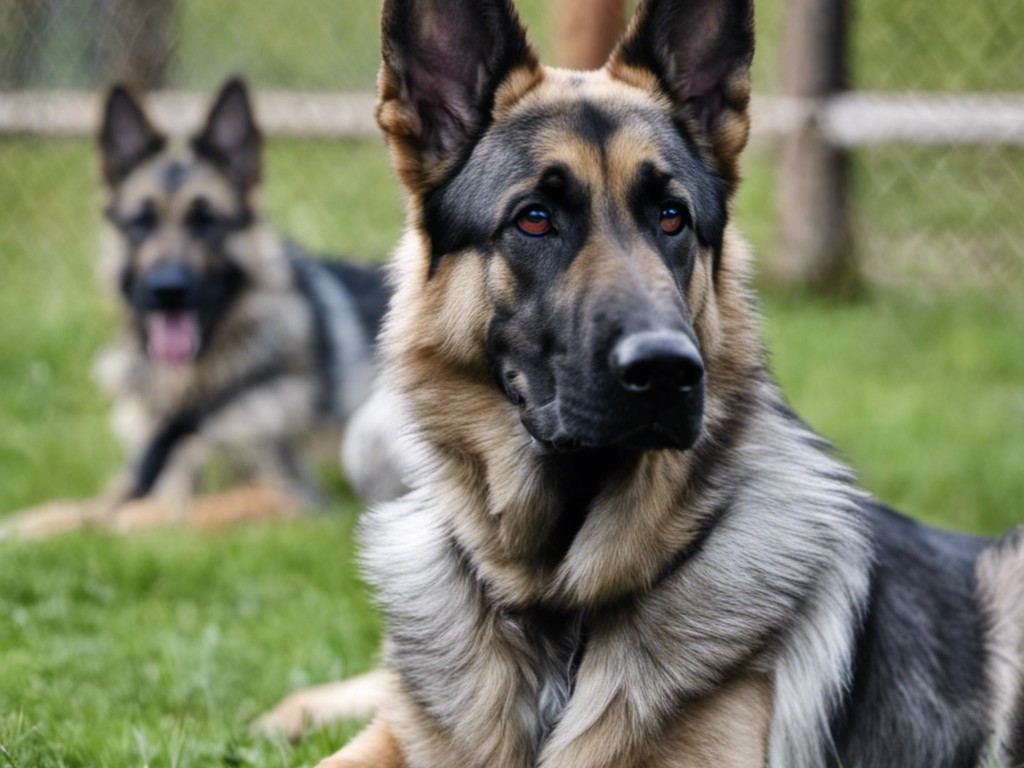
Pros of Silver Sable Shepherds
There are many reasons the unique Silver Sable German Shepherd is steadily growing in popularity:
- Maintains all the fine qualities of the German Shepherd breed
- Gorgeous and unique silver and black coat color
- Often have lighter, more striking eye color
- Intelligent, trainable, and eager to please owners
- Devoted companions and great with children
- Excellent watch dogs and protectors
- More rare and unique than standard colorings
Potential Cons to Consider
- Shedding with thick double coat
- Prone to same health issues as German Shepherds
- Require substantial daily exercise
- Can develop behavioral issues without proper training
- May display wary tendencies around strangers
- Coat requires frequent brushing and grooming
- Large size not suitable for small homes
Overall, Silver Sable German Shepherds make marvelous family guardians and companions. Their darker pigment is also believed to make them less prone to certain health issues.
Training and Care
This color variation has no affect on the standard German Shepherd exercise and training requirements. Silver Sable Shepherds need 60+ minutes of daily activity along with rigorous obedience training, socialization, and mental stimulation. A dedicated owner is a must for these bright, energetic dogs. Their thick double coat also requires brushing 2-3 times per week minimum.
Health and Lifespan
Since Silver Sable German Shepherds are purebred GSD’s, they share the same health tendencies. Potential issues can include hip and elbow dysplasia, allergies, vision/hearing loss, and digestive problems. Reputable breeders will screen parent dogs. With proper care, these dogs typically live 9-13 years.
Finding Silver Sable Puppies
Silver Sable German Shepherd puppies are produced from selective pairings focusing specifically on this coloration. Never buy from a breeder who can’t show health clearances. The internet can help locate reputable Silver Sable GSD breeders but expect waitlists. Take time finding a breeder who breeds to the GSD standard for health and temperament above all else.
The Silver Sable German Shepherd proves you can’t judge a book by its cover. Underneath their wolf-like exteriors are regal, loyal souls ready for a job or life as a devoted companion. Allow their beauty inside and out to mesmerize you and you’ll find a furry friend for life in the Silver Sable Shepherd.
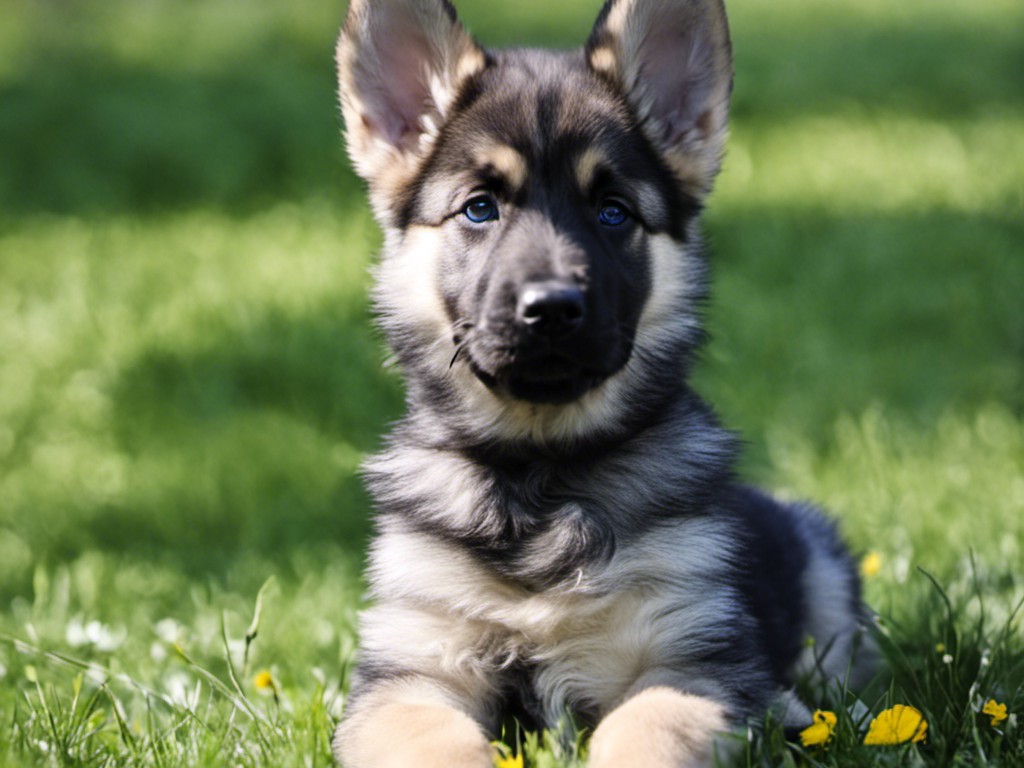
The Pug German Shepherd Mix: A Unique Crossbreed
The Pug German Shepherd mix is a unique crossbreed gaining popularity among dog lovers. Also known as a Gerberian Shepsky, this mixed breed combines the best traits of its Pug and German Shepherd parents. The result is an affectionate, loyal dog that makes a wonderful family companion. Let’s take a closer look at this one-of-a-kind hybrid dog.
Appearance
The Pug German Shepherd mix can vary greatly in appearance since it is a cross between two extremely different looking breeds. Most commonly, they have a sturdy muscular body like a German Shepherd with the slightly curled tail of a Pug. Their heads are often more Pug-like with a shorter muzzle. Ears are floppy or erect. Coats tend to be short to medium in length and can be fawn, black, brown or brindle. Their cute wrinkled faces make them undeniably adorable!
Temperament
This hybrid tends to be highly intelligent, eager to please, and very loyal like the German Shepherd. They also have the playful, sociable nature of the Pug. Pug German Shepherd mixes make devoted companions who bond very closely with their families. They have protective instincts and alert their owners to anything unusual. Early socialization and training is essential to nurture their natural friendliness towards other people and animals.
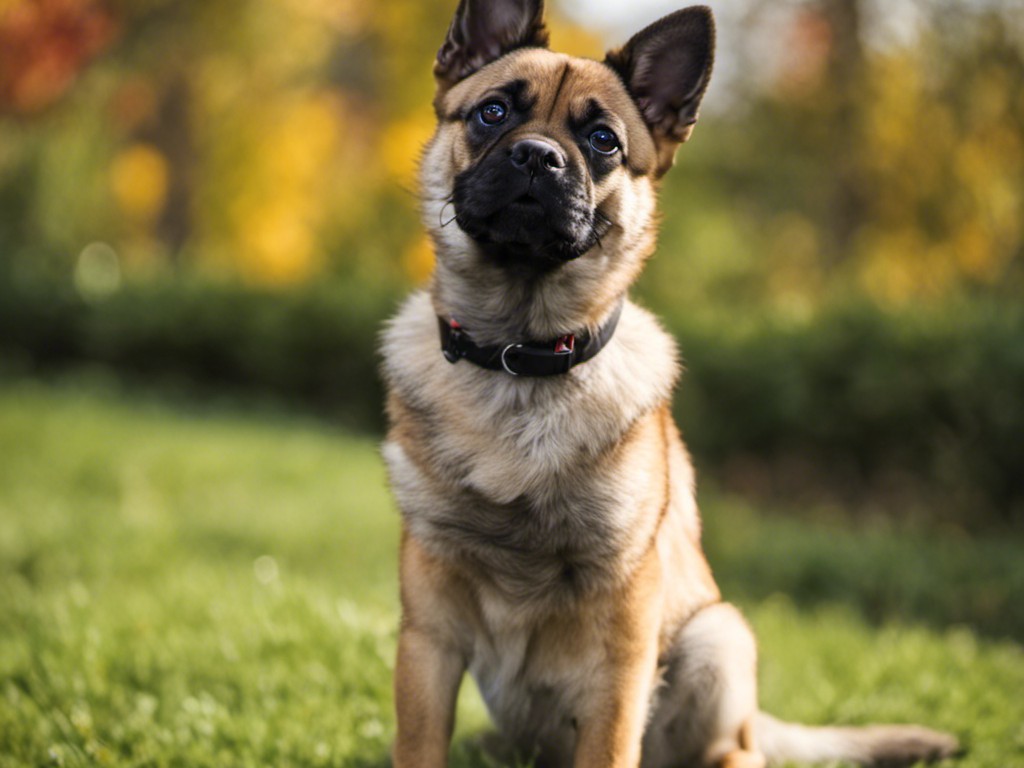
Pros of the Breed
There are many benefits to choosing a Pug German Shepherd crossbreed:
- Very affectionate and loving
- Intelligent and trainable
- Loyal and protective
- More energetic than purebred Pugs
- Does well with children and pets when socialized
- Minimal shedding with smooth coat
- Adorable wrinkled appearance
Cons to Consider
As with any hybrid, there are a few things to keep in mind:
- Can be stubborn during training
- Prone to weight gain if overfed
- Sensitive to heat due to short snout
- May develop breathing issues like Pugs
- High energy requires plenty of exercise
- Can develop protective barking issues
- Large size may be difficult for some owners
Overall, their devotion to family and naturally well-rounded disposition make Pug German Shepherd mixes excellent companions for active households. They thrive when given proper training, exercise, attention, and care.
Exercise and Training
Despite their smaller Pug parent, these dogs have fairly high energy levels. They need upwards of 60 minutes of exercise per day along with ample play time and mental stimulation. A securely fenced yard is ideal. The German Shepherd side of their lineage makes them very smart and trainable. Positive reinforcement training should begin early on. Teaching impulse control is also important for this hybrid breed. With consistency, patience and praise, they are pleasure to train.
Grooming and Care
The Pug Shepherd mix has minimal grooming needs, only requiring occasional brushing and bathing. Their facial wrinkles should be cleaned regularly to prevent infection. Their floppy ears should be checked and cleaned often as well. Both Pugs and German Shepherds are prone to obesity, so watch your dog’s diet and calorie intake. Avoid overfeeding treats and table scraps.
Health Issues to Know
All hybrids can inherit health issues of both parental breeds. For the Pug German Shepherd mix, potential concerns to be aware of include hip dysplasia, eye problems, skin allergies, bloating, and obesity. Reputable breeders will screen for these conditions to minimize risk. With proper diet, exercise, and vet care, these dogs can enjoy a full lifespan of 10-14 years.
Finding a Pug German Shepherd Mix Puppy
We recommend using extreme caution when searching for any hybrid breed puppies. Always avoid pet stores and puppy mills. The best option is to find a responsible breeder who tests their breeding dogs for disease, cares about temperament, and wants to better the breed. Be prepared for possible waitlists with reputable breeders. Patience and research is key to getting a healthy Pug German Shepherd mix puppy.
The Pug German Shepherd combines two extremely different yet wonderful breeds. They may seem like an unlikely pair, but the result is a devoted, fun-loving pooch suited for active families. Their unique wrinkled appearance and loyal personality makes them a one-of-a-kind hybrid breed that’s winning over pup-parents everywhere.
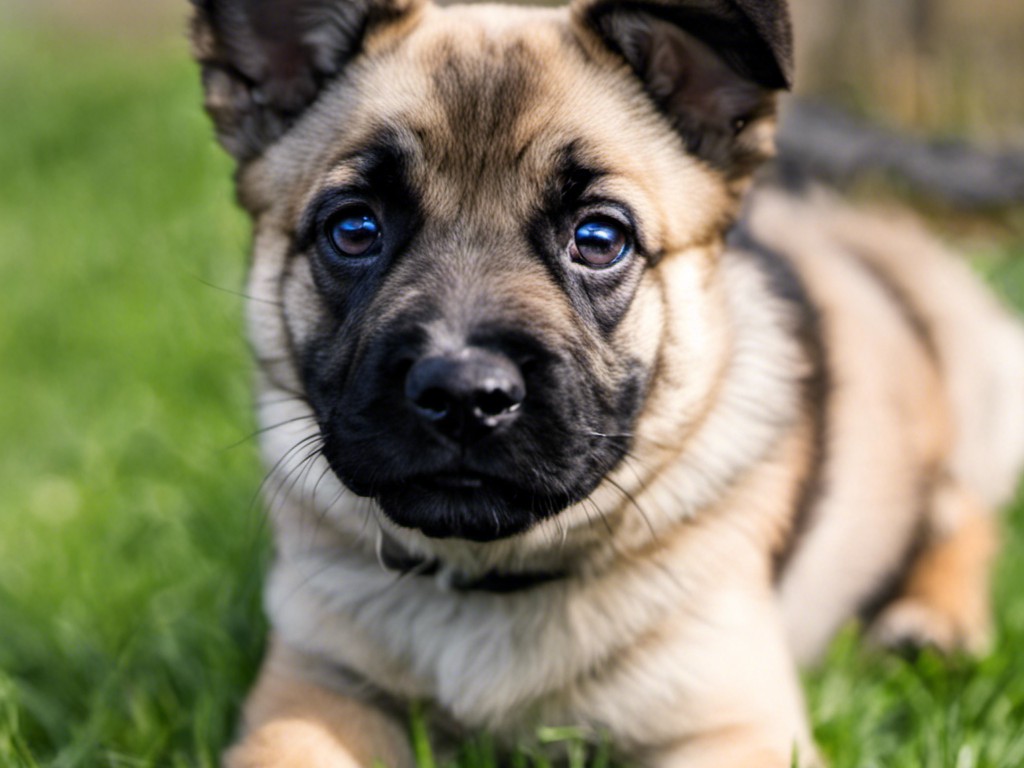
$200 German Shepherd Puppies Near Me
Looking for a $200 German Shepherd Puppy? Think Twice.
While a $200 price tag may seem appealing, extremely cheap German Shepherd puppies often end up costing buyers much more in the long run. These bargain pups usually come from irresponsible backyard breeders or puppy mills with no health testing or consideration for breed standards. Lack of proper socialization and medical care leads to behavior issues and illness down the road – expenses that dwarf any upfront savings. Though initial sticker shock may be high, purchasers are better off avoiding the gamble of cut-rate German Shepherd pups if they want good temperament and health. Investing in a well-bred Shepherd from a reputable breeder is worth the $1,000+ price for a puppy that will mature into a lovely, faithful companion.
Finding a Quality German Shepherd Puppy from a Reputable Breeder
The German Shepherd is one of the most popular dog breeds due to their intelligence, trainability, and loyalty. However, finding a quality German Shepherd puppy from a responsible breeder can take some time and research. Here are some tips on how to locate and identify a reputable German Shepherd breeder and what to expect in terms of costs.
Do Your Research
A great place to start your search is by contacting the German Shepherd Dog Club of America or a local German Shepherd breed club. Reputable clubs maintain lists of members who are actively breeding. You can also search online for breeders in your state or region and read reviews from past puppy buyers. Be wary of breeders who seem to have an endless supply of puppies or litters available. Quality breeders typically only produce 1-2 litters per year.
Verify Health Testing
Reputable German Shepherd breeders will perform health testing on their breeding dogs to screen for genetic diseases common in the breed. At a minimum, the parents should have OFA hip and elbow certifications and be tested for degenerative myelopathy (DM). Some breeders also conduct thyroid, heart, and eye exams. Ask to see proof of the health testing and verify that the reports are public in the OFA database. Avoid breeders who claim their dogs are “vet checked” but cannot provide OFA numbers.
Assess the Breeder’s Facility
Responsible breeders welcome visits to their facility so potential buyers can meet the puppies’ parents and see the conditions they are raised in. The area where the puppies are kept should be clean, spacious, and stimulating. Look for play toys, ramps, tunnels, and other objects for the puppies to interact with. The mother dog should appear healthy, relaxed, and attentive to her puppies. Be wary of operations that will not permit you to see the breeding facility or meet the puppy’s mother.
Expect to Pay $1,000 or More
Quality German Shepherd puppies generally cost $1,000-3,000 each. This pricing factors in health testing expenses, breeding costs, and care of the puppies until they are ready for their new homes. While you may find cheaper puppies advertised online or in classifieds, they are likely from backyard breeders or puppy mills with no health testing. Such bargain puppies often end up costing buyers much more in vet bills and training down the road. Stick to breeders who appropriately price their pups.
Sign a Contract
Reputable breeders will have buyers sign a purchase contract or health guarantee. This contract protects both the breeder and buyer by outlining conditions like spay/neuter requirements, health guarantees, and more. Read the contract thoroughly before signing and get copies of all documentation. Be wary of “too good to be true” verbal agreements.
Meet the Puppy
Once you’ve identified some quality breeders, it’s time to meet the puppies! Reputable breeders will want to meet you in person too to ensure their puppies are going to good homes. Spend time interacting with the puppy you intend to take home and ask the breeder questions about temperament, socialization, training, etc. Pick an energetic and social puppy, unless you specifically want a mellower personality.
Get References
Ask any potential breeder for references from previous puppy buyers. A quality breeder will be happy to provide contact info for satisfied customers. Call or email a few references to ask if they’d recommend the breeder and if they are pleased with their dog’s health and temperament. Hearing firsthand reviews can provide useful insight.
Consider Long-term Support
The best breeders don’t just hand you a pup and disappear. They will offer continued advice and support for the life of your dog, even taking back dogs they’ve bred if an owner can no longer care for them. Establish what kind of ongoing involvement the breeder will have before committing to one.
Finding the right German Shepherd puppy may take weeks or even months of searching, but it’s well worth the effort. Avoid the temptation of puppy mill pups and backyard breeder advertisements offering dogs for just a few hundred dollars. These pups often have serious health and temperament issues that end up costing new owners far more in the long run, both financially and emotionally. Do your homework to locate quality, health-tested German Shepherd puppies from breeders dedicated to improving the breed. Expect to invest around $1,000 or more for such a pup, but you’ll likely find it’s worth every penny once you welcome your wonderful new German Shepherd into your home and family!
- ‹ Previous
- 1
- 2
- 3
- 4
- Next ›




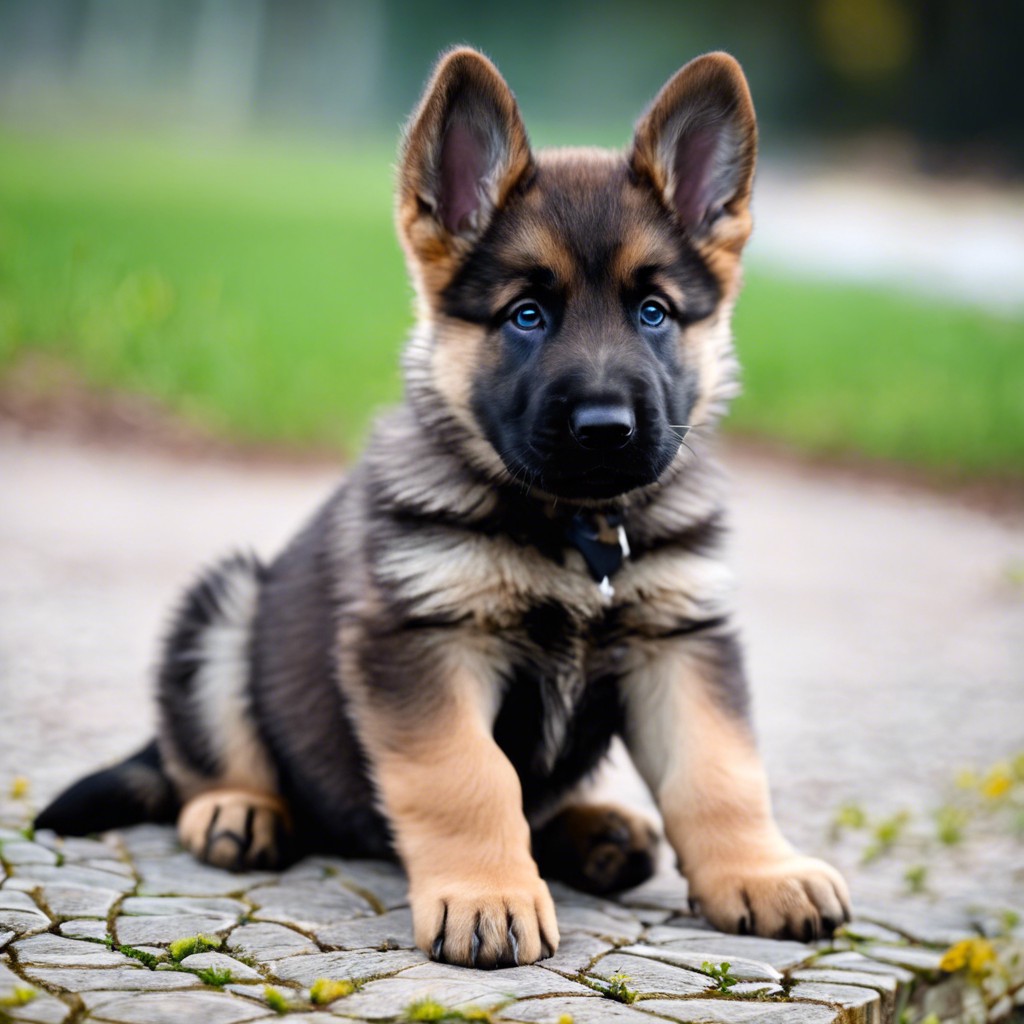

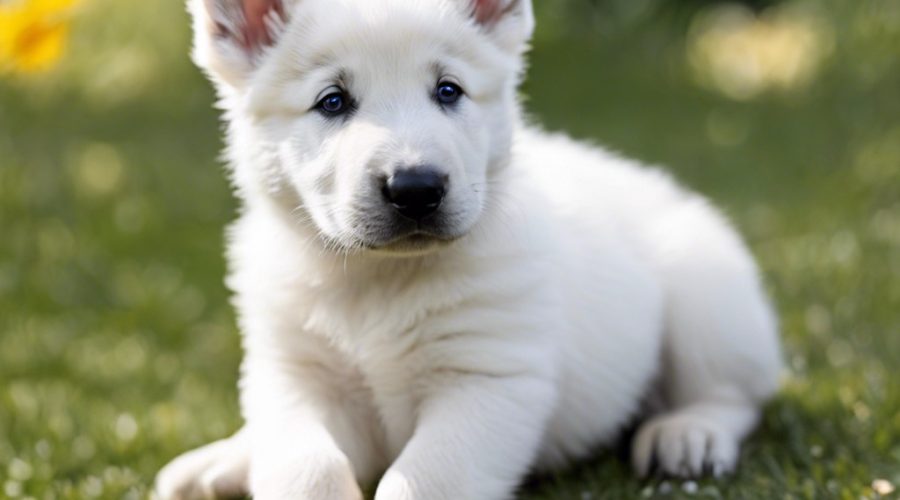
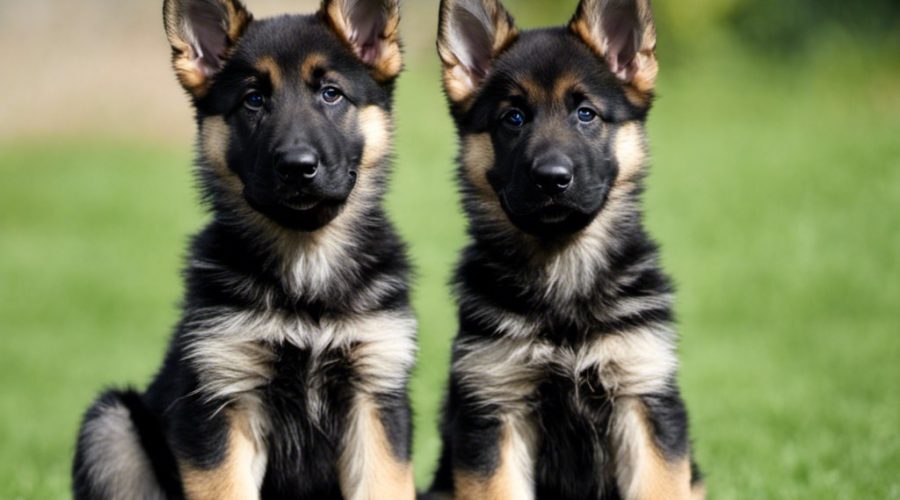
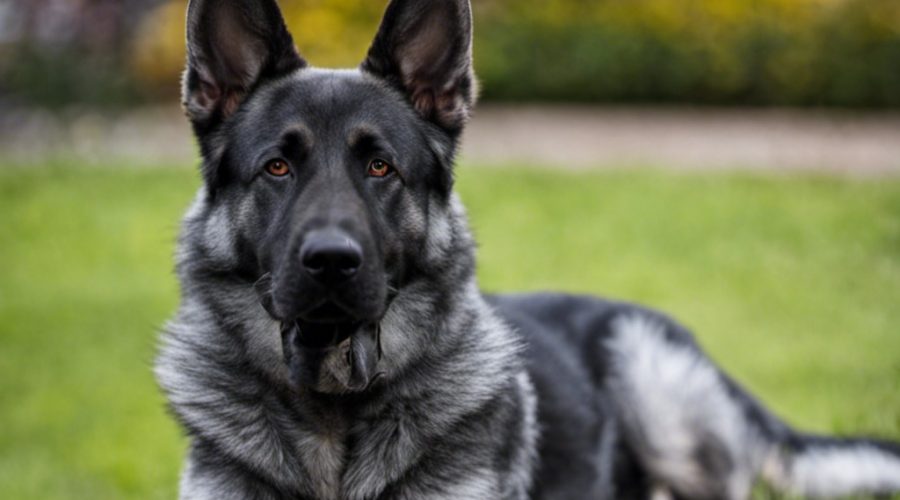
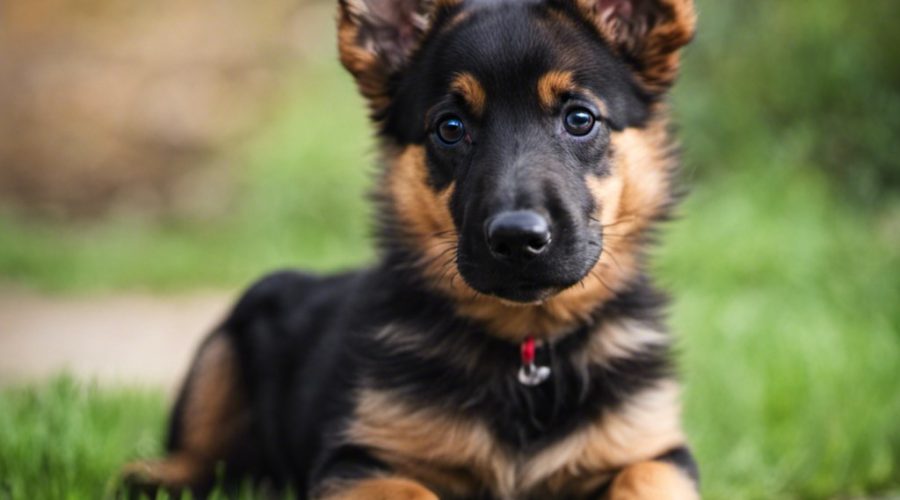

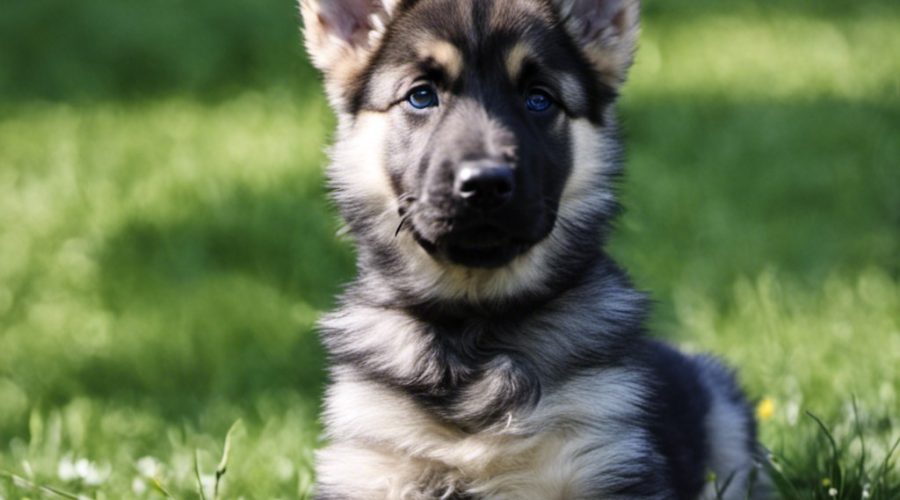
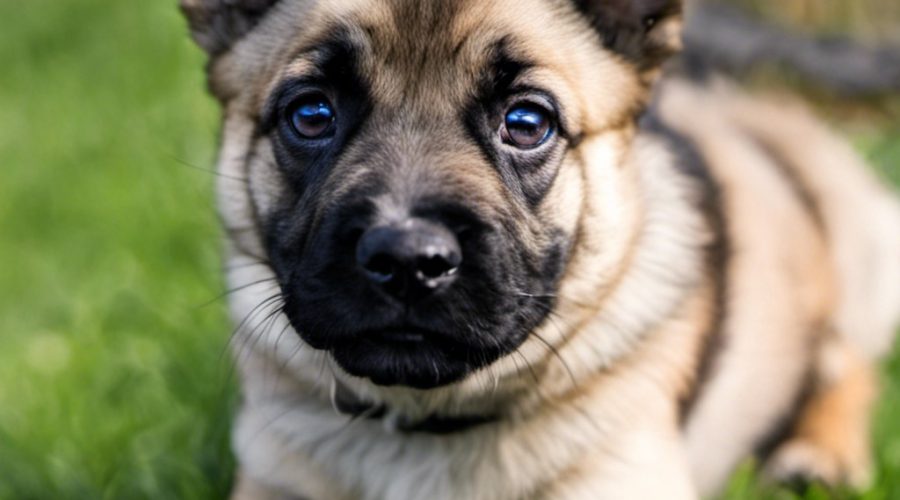
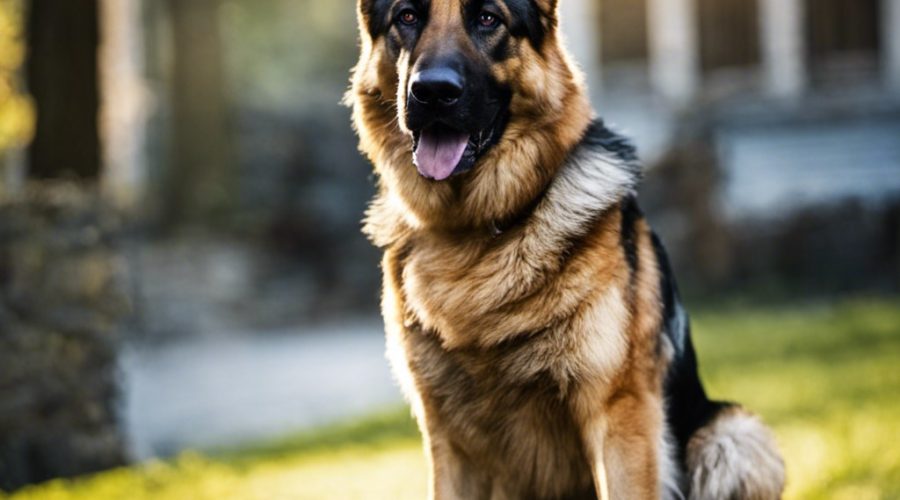





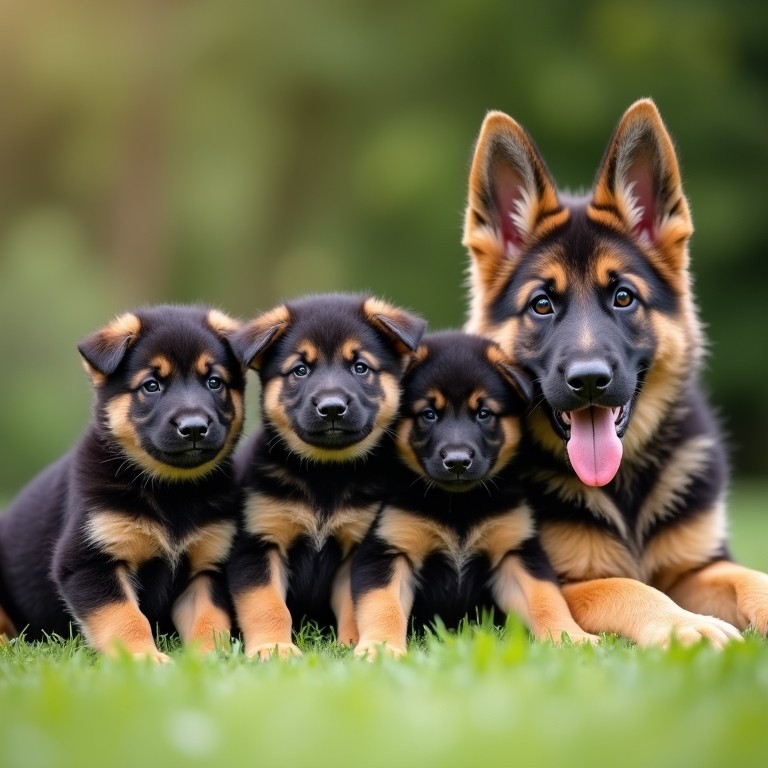
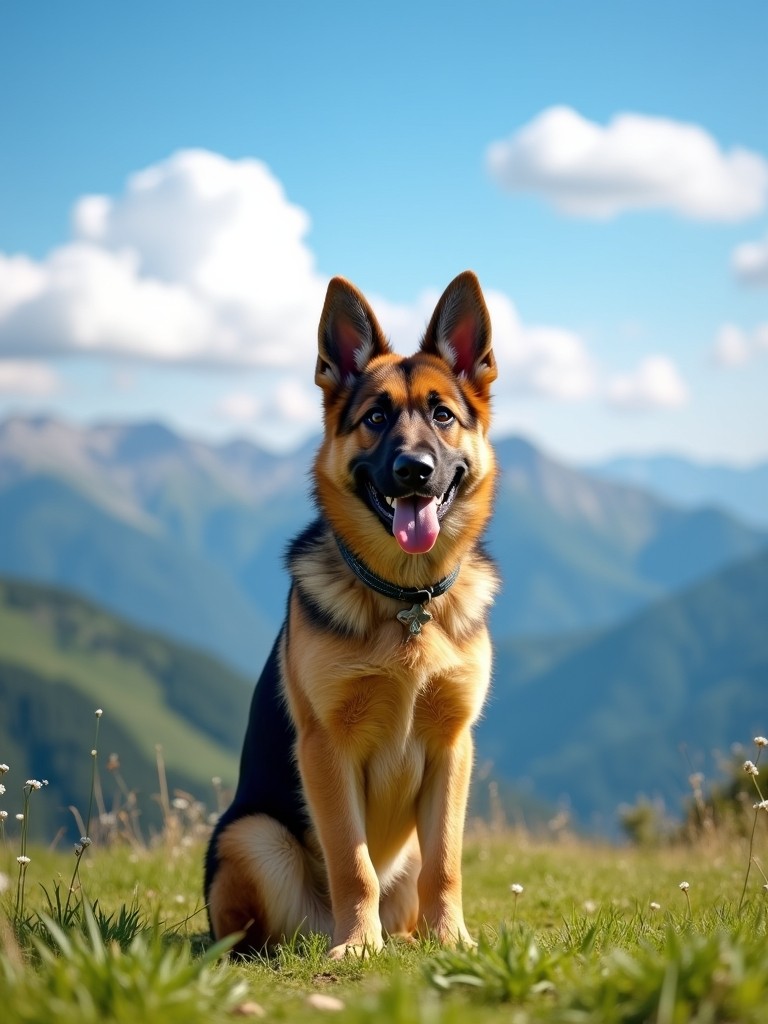
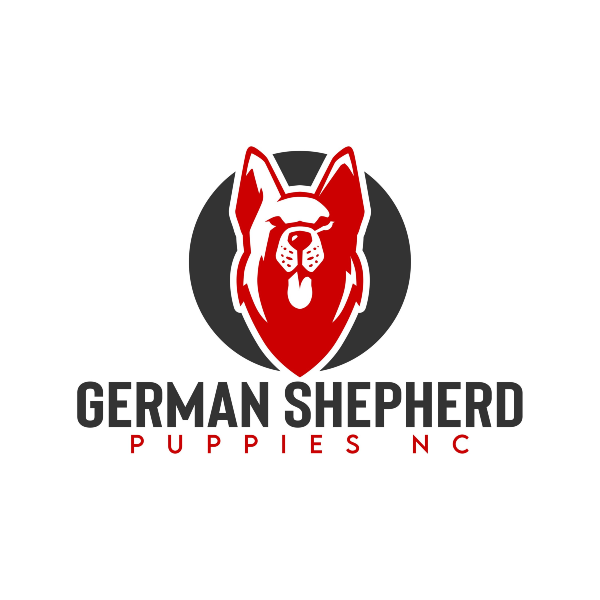


Our Social Media Channels